#1960’s tv stars as marvel superheroes
Explore tagged Tumblr posts
Text


#marvel#marvel fan art#women of marvel#marvel comics#avengers#carol lynley#carol danvers#1960’s tv stars as marvel superheroes#old hollywood as marvel superheroes
4 notes
·
View notes
Photo

Sally Field as Squirrel Girl
#squirrel girl#sally field#1960's tv stars as marvel superheroes#great lakes avengers#new warriors#marvel fan art#marvel now#marvel
1 note
·
View note
Text
The Whole Marvelous Super Ultra Cosmic Magical Comic Book Universe
The produce of imagination and business that was Marvel Comics was a synchronic harmony sounded by Stan Lee and Jack Kirby and Steve Ditko and every one of the creators and craftsmen and inkers and colorists who worked there. Everything began during the mid 1960's the point at which the Fantastic Four and Spider-man and the X-men (The Uncanny X-Men) were framed from the creative mind of Stan Lee and Jack Kirby.
X-men was a film industry crush the previous summer. I'm certain you additionally recall the profoundly effective Hulk TV show.
The most punctual X-men comprised of Jean (Marvel Girl) Gray (who later turned into the amazingly well known Phoenix), Professor X (Xavier), Cyclops (Scott Summers), the insightful Beast (Hank McCoy), and Iceman (Bobbie). Freaks brought into the world with exceptional "super-freak" capacities.
Later came the New Mutants with more youthful characters having freak controls that occasionally appeared to have them (the main sort of comic book story I don't care for).
These characters from X-men including (Nightcrawler, Wolverine, Storm, Banshee, Kitty) advanced with the appearance of the imagination of John Byrne (beginning in issue #108 of X-men) and Chris Claremont (Giant Sized X-men #1 and Uncanny X-men #94 now esteemed at $500. up in "mint" condition. The most famous person was the principle star in the X-men film- - Wolverine. There makes certain to be a continuation for this film industry crush.
X-men Comics instructed kids that bias is shrewd. Individuals who live in dread and in this way eagerness attempt to annihilate what they don't comprehend.
Fascinating that both the latest Star Wars film and X-men film truly investigated lawmakers (Congress). In the event that force undermines totally is it conceivable our framework is totally bad? The Senator in the X-men film took in his example somewhat late.
Insect man- - the new Marvel film in progress - is about a typical young child anxiety (menaces thumping him, not getting any darlings, skin break out, etc is gentle stuff contrasted with the present school encounters -, for example, not having chance and killed while going to or going to the everyday schedule lured by a destructive medication or tainted by a stellar infection) is only nibbled by a radioactive bug (revolutionary stuff for the mid 1960's).
This gives Peter Parker super powers- - creepy crawly controls - whenever intensified a man could lift a truck and convey it 20 miles as insects do. (Try not to get me going discussing Henry Pym the Antman who became Giant Man in the Marvel's Avengers ((Capt. America, Thor the Thunder God etc.))). Add to that Peter Parker was likewise a splendid understudy who had the option to concoct a web shooter and other extraordinary innovations. What's more, Spider-man was brought into the world as a bi-result of the bi-item known as radioactive material (which Science actually doesn't have the foggiest idea how to dispose of). (Take a stab at telling that to the Bush organization). Everything is energy! Recall Tesla curls.
However, Marvel was not by any means the only spot strutting superpowered characters.
D.C. Funnies (Time Warner), as well, used folklore and accounts of Biblical extents to entrain, invigorate and energize ages of youngsters, children and grown-ups from the 1940's to introduce.
A few characters like Superman, Atom, Flash, Batman, Green Lantern, JLA and others and even D.C's. adaptation of Capt. Wonder might have been propelled by profound writing which recounted Hindu Gods and Goddesses and surprisingly Biblical personages who could remain in fire and so forth
Contents and Wit
Superheroes: starting through human creative mind and from writing, folklore, religion.

However most likely comic makers just made up their wondrous stories.
When I talked with Gerry Conway for the Comics Journal he conceded to me that he had investigated a portion of the funnies he composed. Conway's companion accomplice Roy Thomas no question investigated Conan and Thor and other material while author and supervisor at Marvel. They cooperated on the incredible enlivened Fire and Ice film. (Ralph Bakshi/Frank Frazetta).
Also, at first Thomas got the Conan property over to Marvel from Edgar Rice Burroughs in Tarzana, CA. (Tarzana- - Tarzan...get it? That's right, it also is a comic.)
More seasoned society know and love the endless Films and TV shows and serials highlighting these and other most loved brilliant characters: Buck Rogers, Flash Gordon, Commander Cody (which might have enlivened the Rocketeer comic and film).
COMIC BOOKS - Born by the sheer exhurberance of the actual Universe through the vehicle of the Human Being!
The Comic Industry is an analogy forever. An inestimable dramatization unfurling. In any case, not to place old wine into new containers: Many occasions in the past Marvel and D.C. have joined to do specials that helps the play of imagination. I initially met Stan Lee while I was the administrator of a Comic Book Store in Studio City, California in the 1970's.
Or then again, more precisely, I met him through his works at Marvel Comics - his exceptional contents and mind in 1961.
Exceptionally astute association with the fans through clubs and letter sections in bygone times caused one to feel like one was a piece of something. With Merry Marvel "we had a place."
Stan Lee's accounts contained genuine person's, finished with issues and the start of incredible groundbreaking thoughts and standards for carrying on with a decent life.
As when Spider-man didn't stop a Burglar - a similar Burglar who later killed his caring Uncle- - Peter Parker (Spider-man) got the message - serve humankind. With extraordinary force comes liability.
Furthermore, obligation is the capacity to react.
Energizing anecdotal stories loaded with experience and energy with ethics. Outlined lavishly.
Wonder Super characters were at first looked on by society as trouble makers. Even subsequent to saving human butt large number of times.
J. Jonah Jameson (modest Editor of the Daily Bugle paper) has abhorred Spider-person for more than 30 years. Jameson really attempted to annihilate Spider-man by turning into a super reprobate.
Adrenaline junkie (blind Attorney yet Batman-esque in capacities and actual strength and spryness - however with uplifted faculties) the Man unafraid was regularly marked a scalawag too from the start.
Similar to the always well known Incredible Hulk - first deified as a comic book during the 1960's. Who went from dull and idiotic to approach virtuoso relying upon the decade where this suffering person is perused.
What we dread we regularly view as shrewd.
Funnies have attempted to instruct us that the means are pretty much as significant as the finishes they produce.
What we do en route decides the outcome we will get. Funnies are distributed in light of the fact that a word sounds great to the distributer. However, a portion of these new youthful free distributers need to find out about the significance inside these words (thus do their clients). However, more capacity to these ambitious youths.
What is Yoga, Meditation, Tai Chi, Mantra? What is Zen? (One youthful upstart distributer of "Harmony - intergalactic Ninja" had never known about Alan Watts - incredible advertiser of Zen until I let him know Alan Watts was a renowned and famous scholar turned maverick Philosopher and Author (one of many) liable for acquainting Eastern Religions with the profoundly starved West- - frequently heard on KPFK radio. Alan Watts is potentially the chief advertiser of Zen. Watts' book " The Wisdom of Insecurity," specifies, for goodness' sake, Comic Books. What are Chakras? The Tao implies what? When children grow up and find out with regards to Meditation will they be spoiled by our ineptitude and insatiability?
Trendy expressions ordinarily lower cognizance and create turmoil. Obviously when I use to distribute stuff as a young person I made up names that sounded great however had almost no significance, for example, Beyond Infinity, ما��جا لاند, Eon the Magazine of Graphic Illusions. I know less now than I did then, at that point. What is make, craftsmanship, Love, Truth?
I held a few signature parties with Stan Lee and Jack Kirby in the 1970's and 1980's. I tossed more than 50 effective signature parties with numerous awesome comic book specialists and authors. I'd have the occasion, give rewards, do all the publicizing, realistic workmanship, official statements, and so forth It was an invigorating encounter. It was enjoyable to cooperate with professionals and fans. I parted with a ton of free promotion stuff.
10th Nebula's first signature party was held with Stan Lee, distributer of Marvel Comics. For a considerable length of time my shop suffered in North Hollywood, CA nearby to the world's most seasoned Science Fiction Club (an inherent crowd of companions and fans and PC monsters).
The Stan Lee occasion evoked long queues of Comic Book devotees of any age slobbering for Stan's mark on the sprinkle page of their old and new funnies. These days experts sign funnies on the front of their title en mass which I don't support. (Yet, who pays attention to me).
Funnies structures are frequently manhandled by hopeful youthful distributers who utilize a few pointless full page sprinkles when the impact could be accomplished in a minuscule board - misuse of cash, ink and paper if you were to ask me. Not at all like bygone times when Steve Ditko gave us our best possible value as around 6 boards for each page - he in his manner resembled a Zen Master - the accuracy of his work matched the craft of Chinese Calligraphy (see his one of a kind style in old Atlas Comics from the 1950's). A portion of the new experimentation's by Frank Miller and different gifts have all accomplished outstandingly imaginative work as well.
1 note
·
View note
Text
The Falcon and the Winter Soldier Episode 2: Marvel and MCU Easter Eggs Guide
https://ift.tt/eA8V8J
This article contains The Falcon and the Winter Soldier spoilers.
Marvel’s The Falcon and the Winter Soldier episode 2 is much less of a slow burn than the first episode. Not only do we actually get Sam Wilson and Bucky Barnes sharing screen time together, and a better understanding of what new Captain America John Walker is all about, but we get a host of new Marvel Comics characters introduced to the MCU!
There’s a lot going on in this episode, so let’s start digging in to all the Marvel goodness to be found…
The Star-Spangled Man
The title of the episode is of course a reference to Steve Rogers’ tenure as a piece of propaganda in Captain America: The First Avenger, when he was sent out to convince people to buy war bonds. That excellent MCU film featured an era-appropriate song called “The Star-Spangled Man” with music by Alan Menken and lyrics by David Zippel. When the new Captain America runs onto the football field for his Good Morning America appearance, we have an updated version of the very song being played by the high school marching band.
Similarly, that quick montage of John signing Captain America merchandise is somewhat reminiscent of the “Star-Spangled Man” sequence in The First Avenger, which showed Steve shaking hands, signing autographs, as well as all the 1940s Cap merch that was being produced at the time.
John Walker
John’s origin is so much better here than in the comics, where he was a reactionary almost supervillain called Super Patriot before taking on the Captain America job. Still, despite his early comics history, Walker took the Cap job as seriously and sincerely as the one we see here on The Falcon and the Winter Soldier, and MCU John seems even more sympathetic than Marvel Comics John.
Walker using his shield to cushion Battlestar’s fall from the truck is a pretty classic comic book style Captain America maneuver.
Custer’s Grove, Georgia is a fictional town in Marvel Comics, and that’s indeed where the John Walker of the comics came from. To talk more about this here might get into potential spoilers for future episodes (no, we haven’t seen them either), so for now, let’s just say this is a nice nod to John’s comics history.
John’s wife, Olivia Walker (played by Gabrielle Byndloss) is a new creation for the MCU, and as far as we can tell, she doesn’t have a Marvel Comics counterpart.
John Walker mentions that he’s “been a captain before,” and that probably refers to both his military service
Isaiah Bradley
Co-created by Axel Alonso, Robert Morales, and Kyle Baker, Isaiah Bradley was introduced in 2003’s Truth: Red, White, & Black. In the miniseries, Steve Rogers discovered that after his own creation, other scientists tried to replicate the super soldier serum and experimented on Black soldiers. The lone survivor of this was Bradley, who donned a Captain America outfit and fought Nazis against orders. Like his MCU counterpart, he was punished and thrown in prison for years. Eventually, he was pardoned and spent his days living in obscurity, only known as a legend by the Black community.
On the show, Bradley is depicted as being the secret Captain America of the 1950s. This is likely to be the closest reference we’ll get to William Burnside, yet another replacement Captain America. Back in the ‘50s, Captain America comics continued to exist, but were a little too knee-deep in being anti-communist propoganda. When Marvel reintroduced Captain America in the 1960s as a member of the Avengers and introduced the plot point that Steve had been frozen during World War II, it essentially negated his 1950s adventures.
Down the line, they explained that those comics were in continuity, but the Cap and Bucky in them were impersonators who had undergone plastic surgery and underwent incomplete versions of the super soldier experiment. This drove them to insanity and the comics were explained as them being paranoid and seeing communists everywhere. The two were put on ice for a while, but were eventually thawed out to fight the real Captain America and Falcon. While Burnside later became the villainous Grand Director, the fake Bucky went on to become a hero named Nomad.
Eli Bradley
The teenager with Isaiah is Elijah Bradley. Introduced in 2005’s Young Avengers, Eli is Isaiah’s grandson. When the Avengers ceased to exist, Eli became the leader of the Young Avengers under the name Patriot. He insisted that he had super soldier serum in his blood, but was secretly just using Mutant Growth Hormone to get by. Eventually, his grandfather gave him a blood transfusion, making his super soldier claims legit.
Eli is just one of the many Young Avengers characters popping up in the MCU recently (including Billy and Tommy on WandaVision, and Kate Bishop’s upcoming introduction on Hawkeye), suggesting a possible incarnation of the tea is coming to the MCU down the line.
Battlestar
Introduced in Captain America #323, Lemar Hoskins is yet another character pulled out of Mark Gruenwald’s legendary run. Hoskins was originally a professional wrestler who was granted super strength from the Power Broker (more on him in a minute). When John Walker took over as Captain America, Hoskins first became the new Bucky before ditching the name in favor of Battlestar. After the storyline of Walker as Cap ran its course, Battlestar has remained a minor patriotic vigilante in the Marvel universe, showing up here and there through the years.
“Black Falcon”
The kid in Baltimore who greets Sam Wilson as “Black Falcon” seems like a fun nod to the fact that when Black superheroes were first becoming a thing in comics, they were often identified as such with their names (Black Panther, Black Lightning, Black Vulcan, etc). Sam was never known as “Black Falcon” but given the era he was created in, things probably could have gone that way. See also, Sam joking with Bucky about being “White Panther.” (Of course, Bucky’s “White Wolf” moniker was first heard in the post-credits scene of Black Panther).
The Power Broker
Robert Moses was the racist bastard who built most of New York City between the Depression and the 1960s…hang on…different Power Broker.
Curtiss Jackson was originally a Machine Man villain, created by Roger Stern and Sal Buscema in the late 1970s before he was picked up for the legendary Gruenwald run of Captain America. There, he ran a corporation that used super science from Dr. Karl Malus to give superstrength to people for a price. That price: indentured servitude in Jackson’s pro wrestling promotion.
Among the people given super strength through the Power Broker’s program: Dennis Dunphy, the legendary D-Man; Sharon Ventura, the second Ms. Marvel (and eventually the second Thing); as well as both John Walker and Lemar Hoskins themselves. Jackson was eventually attacked by the Scourge of the Underworld, a Punisher-like vigilante, and forced to give himself his own super strength treatment, which caused him to become a deformed giant.
The Power Broker of the MCU is definitely tracking in some kind of bootleg super soldier technology, and that seems to be where the Flag-Smashers have gotten their augmented abilities.
The Hobbit
The Hobbit was indeed originally published in 1937, but wasn’t published in the U.S. until 1938. So either Bucky was a really voracious reader who ordered stuff from abroad, or his memory is a little faulty…unless James Buchanan Barnes was already running secret missions in Europe long before the United States entered World War II?
Miscellaneous Notes
We get Bucky’s therapist’s first name here, she’s Dr. Christina Raynor. Still not finding any Marvel Comics parallels here, but we’re keeping our eyes open.
cnx.cmd.push(function() { cnx({ playerId: "106e33c0-3911-473c-b599-b1426db57530", }).render("0270c398a82f44f49c23c16122516796"); });
The shot of the two pairs in the truck staring each other out seems like a homage to every tv episode where a duo meet alternate dimension versions of themselves, and aren’t impressed.
Spot anything we missed? Let us know in the comments!
The post The Falcon and the Winter Soldier Episode 2: Marvel and MCU Easter Eggs Guide appeared first on Den of Geek.
from Den of Geek https://ift.tt/3cqentM
2 notes
·
View notes
Text
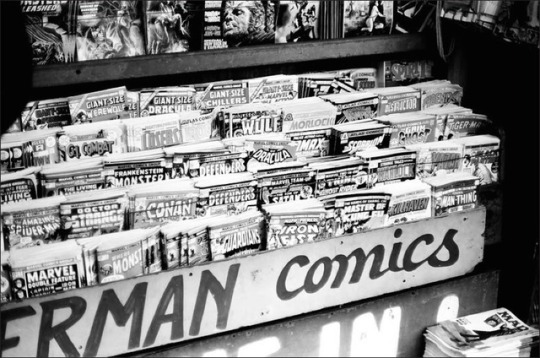
Superhero Comic Book Publishing: Time to Change
So I've been reading rumors (and had a recent conversation with a top exec at one of the Big Two) about the potential end of Marvel and DC as publishers of original comics, and I Have Thoughts.
These thoughts are the product of fifty years experience working in and around the superhero comic book business, writing and editing for both Marvel and DC. I'm no business expert. I'm not a student of publishing. I can't analyze a spreadsheet or write a business plan. I'm not an MBA. The closest I've come to owning and running a company was helping my second wife develop her small business (though I believe some of the lessons we learned about the perils of expanding a business are relevant here).
No, what I'm about to discuss isn't the result of a deep understanding of big business, market share growth, the realities of corporate politics, or any of the realpolitik aspects of modern day publishing as understood by the people who've brought both companies to this moment of near collapse.
I'm just a long-time observer who's worked in the superhero field almost since its modern inception in the 1960s.
Perspective: when I started writing comics professionally, Marvel was publishing about 12 titles a month, and DC (then National Periodical Publications) was publishing about 30. Comics cost 15 cents and offered between 20 and 25 pages of story. (I'm not going to work with exact numbers because for my purposes here exact numbers aren't relevant; like I said, I'm no MBA, and this is based on personal observation, memory, and experience. If I get a precise number wrong, sue me, it doesn't matter.)
Background: How the 1960s and 1970s got the business to where it is today, and how that era reveals possible ways out of the current crisis.
It was during the 1960s, a period of modest output (compared to today), that almost ALL of the roots of modern superhero comics mythology were created. Modern incarnations of The Flash, Green Lantern, Batman, Robin, Batgirl, Aquaman and Mera, Wonder Woman, the Teen Titans, the Fantastic Four, Spider-Man, Black Panther, X-Men, Daredevil, Captain Marvel, Black Widow, Thor, Captain America, Iron Man--
The list of characters and storylines and mythology created in the 1960s (with overlap from the 50s and into the early 70s) is just flabbergasting-- especially when you consider the size of the companies and the number of creators who accomplished it.
When I started writing for DC Comics in 1968, their offices consisted of half a floor in a modest office building on Lexington Avenue in Manhattan. Eight editors (or maybe seven, I'm not sure) and one editorial assistant worked under one editorial director and one publisher, with a production department headed by one production manager, one assistant manager who doubled as a colorist, one proof reader, and two or three production assistants, and a receptionist. Each editor was responsible for five or six books and only one editor had enough pull to have an assistant. (Mort Weisinger, who edited the highest selling range of books, had Nelson Birdwell "helping" him with the Superman line-- in fact, Nelson did all the hard editorial work while Mort snarled at people.) Four of the editors shared a single office; two others shared an office; and the two most "important" editors had an office each. That's how I remember it-- I may be off on the specifics but the general picture is accurate. This was how the company that controlled the largest market share of the comic book publishing world, possibly more than seventy percent of sales, looked in 1967-68.
Marvel Comics was an even more bare bones operation. With most of its business operations handled by Magazine Management, Martin Goodman's main publishing operation, Marvel Comics itself in 1968 operated out of a small office on Madison Avenue barely the size of a large modern conference room. The company had one editor and one assistant editor, one production manager, one assistant production manager, a part-time art director, a couple of production assistants, and a receptionist. The receptionist had a cubicle; the production staff shared a "bullpen"; the assistant editor and production manager split an office that wasn't really an office, more of an alcove; and the editor (Stan) had a private office not much larger than an average editor's today. This was the company that was revolutionizing storytelling in modern comics-- and while its individual titles were selling extremely well, its market share, due to an onerous distribution deal with its chief competitor, National Periodical Publications, was much less than it might have been.
That's how the superhero comic book publishing business looked in 1967-68. Prosperous but culturally insignificant (at least, not obviously significant). A pair of modest small enterprises, family owned and operated (NPP was bought by Kinney in 1967; Goodman retained ownership of Marvel until 1968), with rigidly controlled costs and a decent, relatively predictable profit margin.
Five years later, in the early 1970s, EVERYTHING had changed. Both companies were now controlled by larger businesses, and both were under pressure to expand market share and increase profits. Simultaneously comic book readership was dropping as the baby boomer audience aged out. The superhero comic book business was in a crisis-- and each company responded in hysterical counter-productive ways. Marvel, no longer hampered by its distribution deal with its competitor, worked to expand its market share with an explosion of new titles in multiple genres-- without proportionately expanding its editorial support structure and production staff. DC Comics experimented with new titles and new formats, without an overall publishing strategy or company-wide creative approach, continuing its tradition of independent editorial fiefdoms.
For most of the 1970s, in other words, both companies, Marvel and DC, faced creative and economic chaos. That chaos produced memorable and influential work-- Kirby's Fourth World was born, I killed Gwen Stacy, the X-Men were reborn under Chris Claremont, Jim Starlin created Thanos and killed the original Captain Marvel, Batman began getting dark-- but the companies themselves were flailing. Management at both Marvel and DC were clueless how to proceed. (As someone who held editorial positions at both companies in the 1970s I can attest top executives at DC and Marvel were way out of their depth.)
No one working in comics in the early to mid 1970s had any realistic expectation the business would even exist by the end of the decade-- news stand sales were that bad and getting worse every year. Cost cutting was rampant. Marvel reduced page count to 18 pages (and tried to hide it by paying writers and artists for 1 page that was printed as a "double page spread"). DC maintained a higher page count while adding reprint pages in order to increase the price. Short term fixes for a devastating long term crisis.
Two events saved superhero comics from disappearing in the late 1970s, and each produced effects that fundamentally altered the economics and creative direction of the business up to the present day.
The first event was the creation of the Direct Sale Market by entrepreneur Phil Seuling in 1973. There are many articles available describing how the direct market expanded through the 70s and 80s, so I won't repeat the details here, but in a nutshell, the direct market offered comic book publishers a way to guarantee the profit on individual titles compared to newstand sales. Comics sold through newstand distribution were returnable; sales to the direct market were not. Returnability meant most of a title's print run was wasted. (Typically in that era a publisher would print, say, 200,000 copies of a title to sell 70,000.) In addition, the direct market offered predictability-- eventually publishers would learn in advance how well a title might do because of pre-orders. These positives, of course, have a downside, but we'll get to that later. By the late 1970s and into the 1980s, the direct market for comics was viewed by almost everyone in the business as a god send that saved a dying business.
The second event that saved superhero comics was the arrival in 1978 of the first mainstream superhero blockbuster movie-- Superman. That movie and its sequels, followed by Tim Burton's Batman in 1989, fueled the growth of "serious" superhero mythology in mainstream pop culture (as opposed to the kid-friendly Superman series of the 1950s and the camp comedy of 1966's Batman TV show). Those movies (and other baby boomer inspired genre entries into mainstream culture like Star Wars and Indiana Jones) began the gradual colonization of pop culture by superhero mythology which exploded into fruition in the 2000s. In the 1970s, however, the main effect Superman the Movie (and later, the Batman film) had on comics was to temporarily increase sales and thus allow both companies to avoid dealing with longer-term creative and economic questions about the fundamental viability of the industry's business model.
The combination of both events, the development of the direct market and the arrival of the blockbuster superhero film, saved the comic book business as such in the 1970s-- but at the same time created and reinforced conflicting tendencies that today have produced a potentially fatal contradiction in how super hero comic book publishers approach their business.
On the one hand, the growth of the direct sale market into the de facto sole distribution point for superhero comics (the recent Walmart experiment and the digital comic market notwithstanding) has resulted in an incestuous and shrinking niche market for the sale of physical comic books. As recent reporting makes clear, this is unsustainable as a business model. Both Marvel and DC have resorted to increasingly desperate and counterproductive marketing ploys to maintain market share and profitability in a decreasing pool of readers-- a ridiculous explosion of variant covers, "special" events, crossovers, mini-series, extortionately-priced first issues, reboots and rebirths and renumberings, spin-offs and multiple versions of the same superhero teams, more events, more crossovers, more tie-ins. What all of these efforts have in common (despite some high-quality creative work on individual titles) is a complete absense of long-term strategic thinking in either the creative or business sense. What's the plan here? How is any of this short term market share maneuvering going to build and sustain a stable long-term readership? And, in particular, how does it fit with the other, even more significant development in the superhero comic book business-- the ascendency of superhero mythology in pop culture?
That second fact-- the mainstreaming of superhero mythology, begun by the Superman movie in 1978-- is the most significant development in the modern history of the comic book medium, and NEITHER company has developed an effective strategy to address it in their creative approach or their business model. The primary reason they haven't, I believe, is rooted in the first of the two events that saved comics in the 1970s, and is at the core of the contradiction that's crippling the superhero comic book business today-- the direct market and its lock on the distribution of comic books.
On the one hand, you have superhero mythology in mainstream media-- a mass market appealing to millions upon millions of consumers world wide, a potential audience beyond anything imagined by comic book creators half a century ago in our most weed-enhanced fantasies. And on the other hand, you have superhero publishing in the direct market-- a shrinking niche market numbering in at most a hundred thousand, dominated by a core readership of a few thousand, whose financial support is strained to the breaking point and beyond by ruthless and extortionate marketing of low-value-added gimmick publications that thwart long term emotional investment.
In a rational universe, both companies would be examining their core business strategy to stake a claim in the mainstream market-- a claim they have a moral, creative and financial imperative to demand as the originators of the mythology being celebrated. If ever there was a moment for the Big Two comic book publishers to think outside the traditional box, this is it. Instead, they are consumed with chasing the diminishing returns of the direct market-- creating properties to exploit a readership exhausted by the financial and emotional demands of predatory publishing techniques designed to milk as much profit from a shrinking audience as possible. This isn't only cynical, it's stupid and counterproductive-- not to mention ultimately an expression of creative bankruptcy.
So, having analyzed the problem from my own admittedly limited viewpoint-- a viewpoint privileged, somewhat, by fifty years of experience-- do I have any solutions to propose?
Yes, I do.
The superhero comic book business is in a death spiral, and everyone in the business seems to know it. A crisis as serious as this cannot be addressed by fixes at the margins. We need a fundamental break with the business practices that have brought the companies to this point. A radical solution to a radical crisis.
Both Marvel and DC need to redefine themselves as creative entities. What is their CORE purpose? What is their CORE contribution to the larger enterprise of creating superhero mythology for mainstream media?
Is their core purpose publishing paper pamphlets for sale to a small readership of tens of thousands? Or is their core contribution creating stories and characters in comic book format that can be transformed into other forms of media?
If it's the first, their business is a dead end, and nothing they do will extend its existence past the next few years. The direct sale market is dying. There's no time to develop other methods of distribution to profitably replace it. The publishers have tried expanding into bookstores, which, like the comic book stores, are dying. They've tried expanding into big box stores like Walmart, but that experiment seems to have failed. They've sought sales in digital format, but judging by reports of my own sales in that medium, it's not a panacea-- yet. Traditional comic book publishing for profit by the Big Two seems hopeless, by all the available evidence, at least as presently constituted. Maybe, if both companies scaled back overhead and production to 1967 levels-- Marvel producing 12 books a month with a small office and a skeleton staff, DC producing 30 with a slightly larger editorial footprint-- they might survive as pure publishing entities.
But survival shouldn't be a goal.
Instead, I suggest both Marvel and DC dramatically redefine themselves as creators of comic book content first-- and profitable publishers second, if at all.
One advantage both companies have as corporate subsidiaries that they never had as independent family businesses is something they need to embrace and promote to their corporate masters as a positive principle-- neither company needs to turn a profit, at least not in the short term, and not as publishers. Instead they should redefine themselves primarily, in the modern lexicon, as IP creators. Intellectual Property is one of the most important drivers of modern corporate media success-- if not the most crucial component. Comic book publishers are easily the most cost effective creators of IP in modern media. For a media corporation to require profitability of an IP generator like a comic book publisher, when even the highest levels of publishing profitability pale beside the far greater value of the IP itself, isn't just short-sighted, it's counterproductive and self defeating.
Marvel and DC should see themselves primarily, if not solely, as IP generators, and sell themselves to Disney and Warnermedia as such. Publishing should be the tail of the dog; the dog is creation.
If the companies do follow this path, they'll also need to radically rethink their approach to publishing-- ironically, with potential benefit both to themselves as profitable enterprises and to their customers in the direct market.
For example, if your goal as a company is no longer to increase or maintain market share in the direct market, but instead to generate exciting and long-term potential IP, you don't need predatory publishing practices like variant covers, or twice-yearly "events," or extortionate pricing, or required pre-orders. You could even begin to accept returns, lightening the financial pressures on dealers and encouraging them to risk new series. You could reduce the number of unnecessary spin-offs and reboots. You could devote energy to nurturing creatives and long-term storylines.
At one point in the mid 1970s I had a dust up with Marvel's production chief, the late John Verpoorten. I was complaining that a revision to the production schedule would negatively affect the aesthetic quality of a book I was writing and how could he justify that (I was young, naive and arrogant). John looked at me and growled, "From an aesthetic point of view we can maybe justify ten of these books." I was gobsmacked and obviously never forgot his point.
Redefining their core mission as IP generators would allow both Marvel and DC to address John's point positively: is there an aesthetic reason to publish this story? Does it say something new and valuable about our characters, or is it just an effort to increase market share? Does it add to the mythology, or diminish it? Is it good?
Publishing sales success has rarely been a reliable predictor of a superhero story's viability in other media. Venom is a popular comic book character with mixed success in sales-- but a worldwide hit as a movie antihero. The JLA Detroit era heroes ended ignominiously in a market driven by direct sales, but individually have provided useful source material for CW TV shows. The Green Arrow was never a sales leader in comics. Before the Batman movies, Batman was a mid-level but important DC comic. Deadpool was a popular second string character but again never a sales leader before Ryan Reynolds put on the mask.
There's a way forward for both the superhero publishers and the direct market-- but not if the publishers continue to define themselves first as publishers. That day is past. The publishers will have to be bold if they're going to thrive in the post-direct market world. The first step is for them to decide what they do best. In my view, what they do best is create comic book stories. Those stories transcend the traditional sales platform that produced them. It's time for the bird to leave its nest.
128 notes
·
View notes
Text
Gene Autry's Horse
Peter David recently posted a short essay on the current brouhaha over Martin Scorsese and Francis Coppola saying the Marvel movies aren’t real cinema, not genuine works of art, but just “thrill rides”.
Before going further, let me state my unabashed respect and admiration for Peter David. He’s a creator who certainly earned his spurs, he has a massive body of work, he is an all around mensch, and his opinion is hard earned and well informed.
Except in this case, his conclusions are wrong.
To prove my point, let me ask Peter a question:
What was the name of Gene Autry’s horse?
Those of you wondering what Gene’s horse has to do with the Marvel cinematic universe (hence MCU), my explanation is this: The single largest genre of films made before 1960 were Westerns.
Add to that television programs, where Westerns remained a staple until the mid-1970s.
And radio shows.
And pulp novels.
And comic books.
They were the definitive American movie genre from 1903’s The Great Train Robbery until Butch Cassidy And The Sundance Kid drove a stake through the heart of the standard genre offering in 1969.
There are some who claim Blazing Saddles did the genre in, but Westerns had endured numerous comedy and parody versions in the past.
Butch Cassidy And The Sundance Kid killed the Western as a popular genre by simply having Butch and Sundance do the most logical thing at the first sign of danger, the thing the real Butch and Sundance did in real life: They ran away.
And thus a genre trope was forever slain…
This is not to say they’ve never made another film that falls into the broad category of “Western”, but there’s no audience clamor for more of the genre.
Westerns are now simply historical films set in the American west during the period from the fall of the Alamo (1836) to Arizona becoming a state (1912).
There are films that employ Western genre tropes that take place in the contemporary era (Road House and Extreme Prejudice to name two) or transplant the Western genre to other lands (Sukiyaki Western Django and Tampopo, f’r instance), but as a genre it is dead-dead-DEAD.
Yet at one time, Westerns were so popular that not only did everybody know the name of Gene Autry’s horse, but said horse starred in his own TV series!
So what happened?
Well, several things.
I could cite the changing audience in America, going from 80% rural prior to WWII to 80% urban / suburban after WWII (with a corresponding rise in detective and spy genres, as well as sci-fi), or I could cite a huge glut of material made even more accessible by television, but the truth is this: The overwhelming bulk of American Westerns were nothing but product.
It was actually built into the genre. I’ve been trying to locate the original essay, but a scholarly study some years back concluded only 8 basic plot conflicts drove Western stories, and only 17 stock characters carried said stories (they can be good, bad, or neutral characters, effectively tripling their number).
The essay went on to liken American Westerns to Japanese noh or kabuki dramas: Far from familiarity of material being a problem, audiences came expecting certain tropes and stock characters, and gained their enjoyment from how well said tropes and characters were presented.
Sound familiar?
This is not to say there weren’t films that fell into the Western genre that also aspired to art, but you either had to be a Hollywood heavy hitter to get a chance at making a film like that or, at the tail end of the genre, flying so low under the radar that nobody recognized what you were doing until you did it.
Does that sound familiar?
But the overwhelming majority of Westerns, while possessing technical craftsmanship, were just product: So many feet of gunfights. So many reels of stampedes.
Big budget A-picture or bare bones B-movie, they all fell into the same general patterns, and studios, large or small, promoted them the same way.
And audiences were fine with this. Tom Mix, Gene Autry, Roy Rogers and Dale Evans frequently wound up among the top 10 box office draws in Hollywood during their careers.
Where are those Westerns now?
I’m a big fan of old B-Westerns, having grown up with them on TV as a kid, and know a fair amount about the personalities and production companies involved, seeking out B-Westerns on Amazon Prime and YouTube and the multi-pack bargain bins at big box stores.
How many of today’s superhero fans could identify William Boyd or Red Barry or Rocky Lane or Buck Jones?
They might remember hearing the names of Roy Rogers or Gene Autry since those stars were involved in mainstream marketing such as fast food restaurants or baseball teams (and Autry donated a museum to Los Angeles that’s named after him), but how many have actually seen any of their movies?
We have two competing superhero universes today, DCU and MCU.
Where are the T.H.U.N.D.E.R. Agents movies? How come there’s no Dr. Solar or Brain Boy or Magnus, Robot Fighter films?
Answer: No large corporation stand to make billions promoting those characters and licensing them to toys, video games, vitamin, and Underoos.
Corporations possess no sense of integrity to the original creators’ concepts. They will change things in the blink of an eye if they think it will boost their profit margin. They’ll promote the silliest and the most self-damaging ideas if they think it will make them a few extra bucks today.
Superman and Batman and Wonder Woman succeeded at DC bcause nobody there cared what the creators did so long as they turned their work in on time.
Product.
Jack Kirby and Steve Ditko and Jim Steranko blazed exciting new trails at Marvel because Martin Goodman couldn’t have cared less what they were doing so long as they delivered on schedule and under budget.
Product.
They flew under the radar. They worked in a fast and grungy fashion, knocking the books out as quickly as they could.
To amuse themselves they trafficked in big ideas, eccentric art, outre stories.
That it caught on and blazed a new trail proved a combination of talent and luck.
There was no similar boom for romance comics or nurse comics or Western comics during the same period.
Right now the MCU movies are riding high and they are made with a great deal of technical care and they are amusing and entertaining.
So were Westerns.
MCU movies aim at too specialized an audience. They appeal to this generation, but there’s no guarantee they’ll appeal to the next.
Indeed, there’s a strong argument that the next generation will reject the previous generation’s entertainment simply because it’s…well…theirs.
The films of Coppola and Scorsese will be watched.
They’re not product.
Oh, there were financed to make money, sure enough, but they were financed to make money by expressing the director’s personal taste and vision.
Further, they tend to transcend genre.
Yeah, two generations from now people who really love gangster movies will probably look up The Godfather and GoodFellas.
But people who love film, people who love art will be watching them as well.
They’ll also watch Public Enemy and Little Caesar, but unless they’re film buffs with specialized tastes, they’re going to skip the dozens of “programmers” cranked out in the 1930s to satisfy fans of that genre.
And the reason? The Godfather and GoodFellas and Public Enemy and Little Caesar transcend their genres.
They are about people, not thrills and chills.
Consider classic Universal horror films.
James Whale & co. snuck one bona fide brilliant work of art past Carl Laemmle with Bride Of Frankenstein but after that the brakes clamped down hard and fast.
Uncle Carl couldn’t have geniuses running around doing whatever they felt like, thus risking the audience for Universal’s product.
Consistent mediocrity is better than risky genius in the eyes of the corporations.
The classic Universal monsters? Reduced to The Munsters now; familiar icons, to be sure, but empty jokes, shadows of their former selves.
Replaced by newer monsters who in turn have been replaced by newer monster who in turn have been replaced by newer monsters and who will be replaced by newer monsters still.
‘Twas ever thus.
I begrudge the enjoyment no nobody who enjoys MCU movies.
Have fun. Knock yourselves out.
But never mistake popcorn for caviar.
© Buzz Dixon
Champion was the name of Gene Autry’s horse.
#Peter David#Marvel#superheroes#movies#B-Westerns#Gene Autry#Champion the Wonder Horse#MCU#Francis Coppola#Martin Scorsese
2 notes
·
View notes
Text
15 LEADING LADIES WORTHY OF PLAYING BATGIRL IN THE UPCOMING WARNER BROS. MOVIE
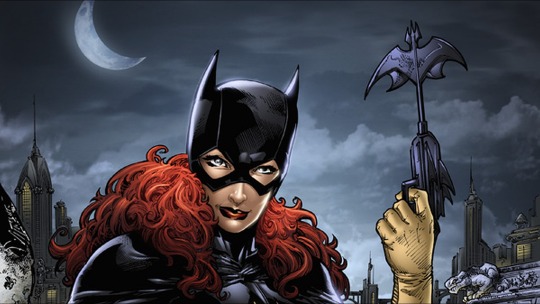
It’s coming! DC’s Batgirl is at long last suiting up and starring in her very own live-action feature film! Previously played by Alicia Silverstone (Batman & Robin, 1997) and the “pioneer of female superheroes,” Yvonne Craig (1960′s tv series, Batman), the time has finally come for Commissioner James “Jim” Gordon’s niece, Barbara Gordon, to shine a spotlight with her very own Bat-signal.
Warner Bros. Studios is working with director/screenwriter Joss Whedon (The Avengers, Buffy The Vampire Slayer, Justice League, Agents of S.H.I.E.L.D, The Avengers and Avengers: Age of Ultron), who's going to write and direct the exciting new superhero film for the DCU (DC Universe). The plot and the release date, however, are still up in the air, and the quest for the perfect actress is on-going!
With a clear call from audiences for more empowering female leads in major motion pictures, who is the most suitable to suit up as the caped-crusading vixen of Gotham?!
Here are my top 15 kick-ass choices (in no particular order):
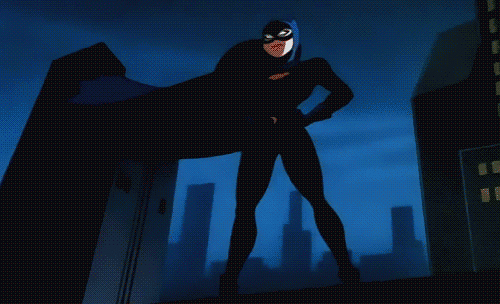
1. MADELAINE PETSCH Known for her breakout role as the sharp-tongued Cheryl Blossom on the hit TV show Riverdale, Madelaine Petsch fits Batgirl’s comic description perfectly. The young, sultry, fiery red-head has made her mark in the hallways of Riverdale High; could she leave an even bigger mark on Gotham?
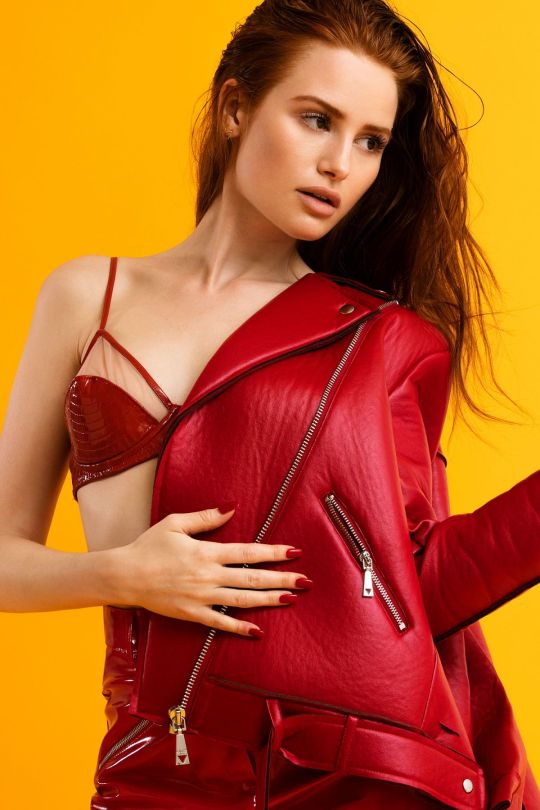
2. BELLA THORNE
With five movies currently in post-production and a young-adult fanbase who will remember her from Family Channel’s Shake It Up and movies like The Duff and Amityville: The Awakening, Bella Thorne is a red-headed “it girl” with a bad-ass demeanour. She would fit into Batgirl’s boots perfectly.
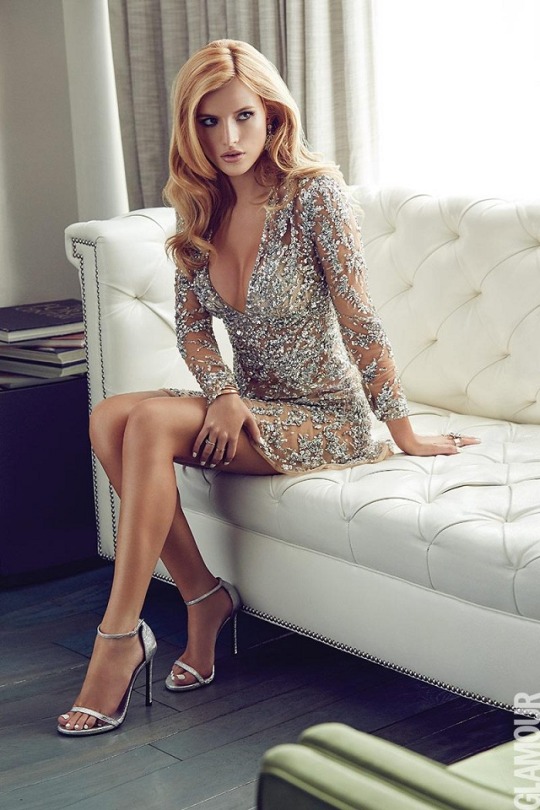
3. YARA SHAHIDI
Recently accepted to Harvard University, this breakout teen actress (ABC’s Black-ish and Grown-ish) has impressed on and off camera since she debuted in HBO’s Entourage in 2007. Should she have the time to kick it in Gotham, Yara Shahidi would sparkle as Barbara Gordan in Batgirl! Smart, beautiful, talented, popular...she’d be doing us the favour!

4. ALICIA VIKANDER
Set to star as Lara Croft in March 2018′s Tomb Raider, it’s safe to say Alicia Vikander has some experience being an action hero. Not to mention, she won an Oscar for her supporting role in 2016′s The Danish Girl. She’d also be the second “Alicia” to play Batgirl since Alicia Silverstone in ‘97. Quick, Batsuit her up!

5. MAISIE WILLIAMS
“A girl is Arya Stark Barbara Gordon of Winterfell Gotham and she’s coming home!” Maise Williams is best known for her gripping role in HBO’s Game of Thrones, and if this young actress brings the same flair and determination she delivers in GOT to Batgirl, we’d have the perfect recipe for a coming-of-age origin story starring an already established action/adventure actress.

6. LIU YIFEI
This experienced actress, model, singer, and martial arts expert has been acting in China since she moved from the United States at the age of ten. Since then, she’s appeared in endless movies including 2008′s The Forbidden Kingdom, where she acted alongside Jet Li and Jackie Chan (the Batman and Robin of martial arts movies). She’s also signed on to play Mulan in the 2019 live-action Disney remake of the same name. Wait, is she already Batgirl?!
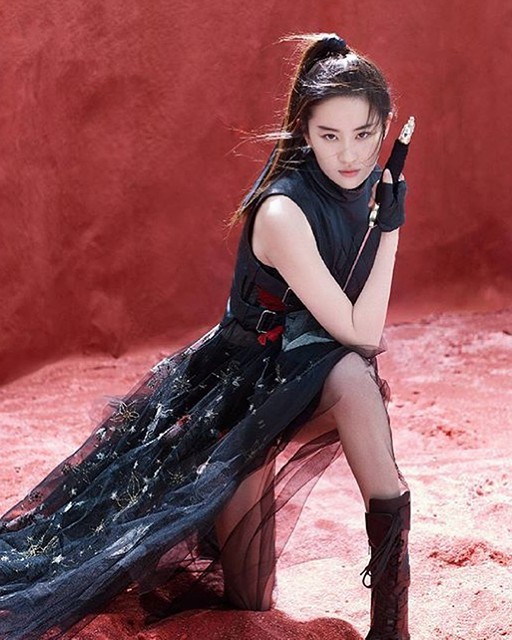
7. MAGGIE GEHA
Already a part of the Batman Universe (Poison Ivy in FOX’s Gotham), Maggie Greha and her rouge mane could easily step off the small screen and onto the big screen as Barbara Gordon in Batgirl. With Ivy being a supporting (and dwindling) character in the TV series, DC could propel in-house Maggie to superstardom overnight (and she’ll look amazing doing it).

8. EVAN RACHEL WOOD
A movie and television star with the beauty and talent to take on any role she’s given, Evan Rachel Wood has intrigued fans over the years with her edgy private life (dating Marilyn Manson) and talented on-screen life (starring in critically acclaimed movies like Thirteen, Across the Universe and The Wrestler). Nominated for three Golden Globes and two Emmy’s, Evan is currently starring in the final season of Westworld but has yet to land a role playing a live-action superhero; Batgirl could be the leading role she’s been waiting for.

9. ZOË KRAVITZ
Another Batman Universe alumni (Catwoman in 2017′s The LEGO Batman Movie), Zoë Kravitz is the gorgeous daughter of rock star Lenny Kravitz and actress Lisa Bonet. and she’s no stranger to action/adventure movies having starred in Mad Max, X-Men: First Class and the Divergent Trilogy. Landing the role of Barabara Gordon in Batgirl would not only garner intrigue, it would further her success in the genre like never before. Maybe shorten her name to Babs Gordan, too. It’s bad-ass like Zoë!
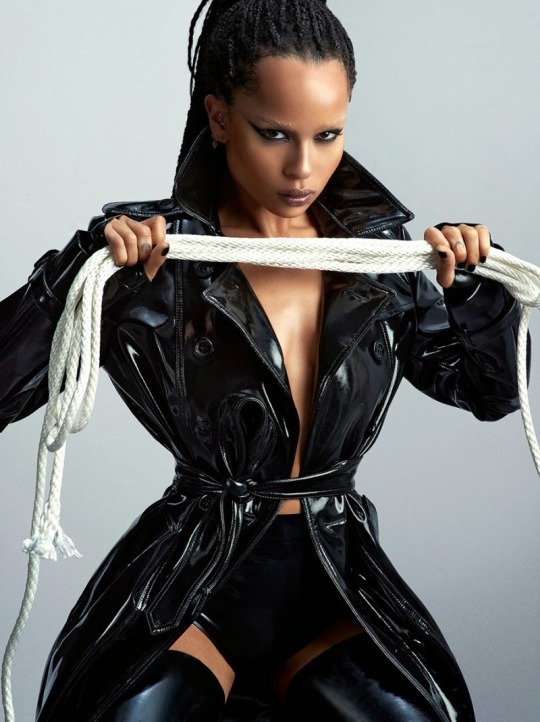
10. JANE LEVY
Rising to fame as Tessa Altman on ABC’s sitcom-style TV series, Suburgatory, Jane Levy has moved onto to star in two back to back horror films with director Fede Álvarez (2013′s Evil Dead remake and 2014′s Don't Breathe). With three films in post-production and a recurring role as Elizabeth on SHOWTIME’s Twin Peaks, Jane has the look, experience, and tenacity to knock this role out of Gotham Park.

11. NATALIA DYER
Landing the coveted role of Nancy Wheeler in the Netflix original series, Stranger Things, Natalia Dyer is riding a tidal wave of popularity. Her show is a global phenomenon and she has two feature films in post-production. If she’s lucky, Nancy Wheeler’s search for Barb in the Upside Down will metaphorically come full circle if she plays Barbara Gordon in Batgirl.

12. HAILEE STEINFELD
Releasing a new album and teasing several new movie projects this year (including Transformers: Bumble Bee), Hailee Steinfeld is at the top of her game. The fresh-faced 2010 Oscar nominee (True Grit) would bring a surge of interest to the Batgirl project and could even spawn sequels based on the success of her previous movies like the Pitch Perfect Trilogy. If director Joss Whedon is planning a teenaged coming-of-age story à la Marvel’s Spider-Man: Homecoming, Hailee is a perfect choice.

13. WILLOW SMITH
Singer Willow Smith is another beautiful celebrity child. Her parents, Will and Jada Pinkett Smith, have both played villains in the Batman Universe (her father played Deadshot in Suicide Squad and the upcoming Suicide Squad 2, and her mother played Fish Mooney in FOX’s Gotham). Willow has been a successful recording artist from a very young age - ”I whip my hair back and forth” - but if she ever wants to branch out into acting, she has the lineage, wits, style and beauty to play a fierce Batgirl. Bonus Bat-points if her dad makes a cameo as Deadshot!
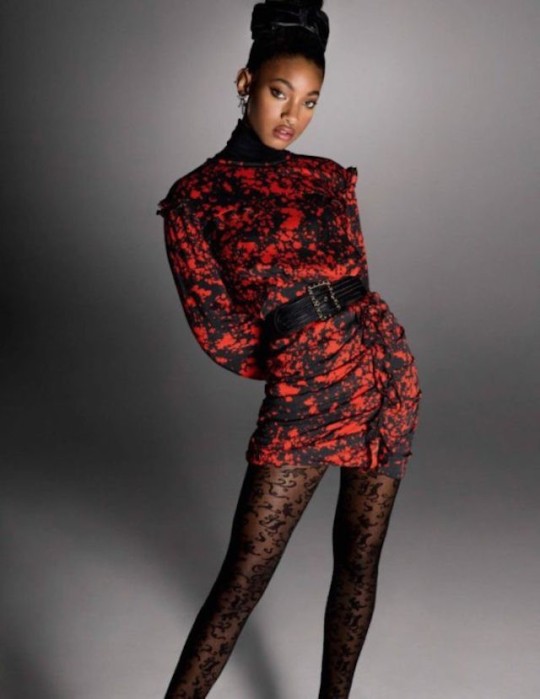
14. SAOIRSE RONAN
Nominated for three Best Actress Oscars from 2008-2018 (Atonement, Brooklyn, and Ladybird) this young but layered actress would bring a much deeper level of emotion to Barbara Gordon’s character. A Saoirse Ronan Batgirl script would have to delve into the dark side of the heroes and villains of Gotham, like the Christopher Nolan trilogy. Maybe she’ll even get a fourth Oscar nod!
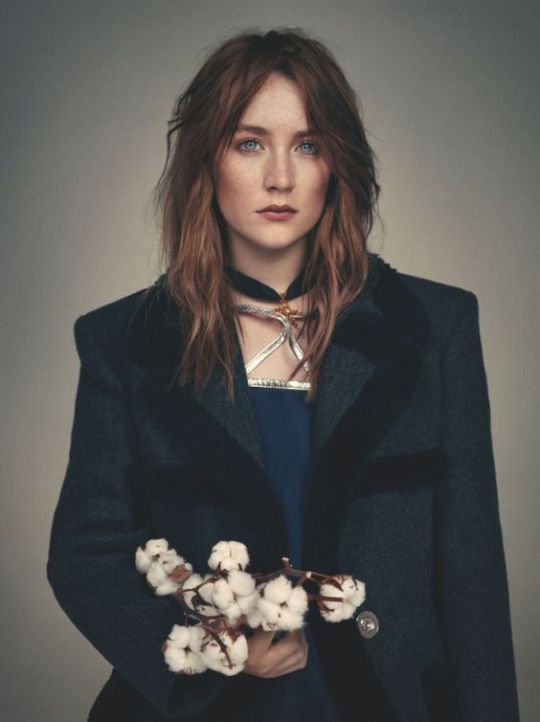
15. LINDSAY LOHAN
Lindsay, Lindsay, Lindsay... Last but not least, what can anyone say about Lindsay Lohan that hasn’t already been said? The infamous actress recently took to Twitter posting a picture of herself next to a comic of Batgirl, then asked fans to Retweet it and/or reach out to director Joss Whedon and help get her the gig. The hustle is real! Lindsay is spicy and controversial, and although she hasn’t worked in years, she’s apparently ready to dive back into the world of acting in a very big way - the role of Barbara Gordon in Batgirl! She does have the look down!

#batgirl#batman#gotham#DC#DC Comics#Comics#Batman Universe#Barbara Gordon#James Gordon#Bruce Wayne#Suicide Squad#The LEGO batman movie#movies#film#upcoming movies#superheroes#superhero movie#action movie#adventure movies#movie#leading ladies#actress#Ladybird#DCU#DC Universe
4 notes
·
View notes
Photo

Sally Field as Squirrel Girl
#squirrel girl#sally field#marvel fan art#marvel now#marvel#new warriors#great lakes avengers#1960’s tv stars as marvel superheroes#gidget
1 note
·
View note
Photo

Robert Conrad as Nick Fury
As James (no coincidence) West, Conrad showed us what a Nineteenth Century James Bond looked like. As Col. “Pappy” Boyington, he showed what a mature, gutsy determined hard charging leader looked like in WWII. Kinda like Nick Fury!

#marvel fan art#nick fury#robert conrad#wild west#1960's TV stars as Marvel Superheroes#1980's TV stars as Marvel Superheroes
3 notes
·
View notes
Photo

New Post has been published on https://techcrunchapp.com/chadwick-boseman-tributes-pour-in-for-black-panther-actor/
Chadwick Boseman: Tributes pour in for Black Panther actor



Media playback is unsupported on your device
Media captionChadwick Boseman: Five things to know
Big names from the world of entertainment, sport and politics are paying tribute to American actor Chadwick Boseman, who has died aged 43.
The Black Panther star was diagnosed with colon cancer in 2016 but had never spoken about it publicly.
His family said he had filmed many of his recent movies while undergoing “countless surgeries”.
Among those celebrating his life was former US President Barack Obama, who said the actor was “blessed”.
“Chadwick came to the White House to work with kids when he was playing Jackie Robinson,” Mr Obama tweeted, referring to the 2013 film 42.
“You could tell right away that he was blessed. To be young, gifted, and Black; to use that power to give them heroes to look up to; to do it all while in pain – what a use of his years.”
Racing driver Lewis Hamilton dedicated his pole position at the Belgian Grand Prix to the actor.
“He’s inspired a whole generation of young black men and women and provided them with a true superhero to look up to. Rest in power my friend,” he wrote on Twitter.
Boseman was born in South Carolina and began his acting career in television roles.
He rose to prominence playing real-life figures, such as baseball great Jackie Robinson and soul singer James Brown in 2014’s Get on Up. But it is his performance as superhero Black Panther for which he is best remembered.
In the 2018 blockbuster of the same name, Boseman stars as the ruler of Wakanda, a fictional African nation with the most advanced technology on Earth.
It was a box office hit and earned Boseman critical acclaim, becoming the first superhero film to get a nomination for best picture at the Oscars.
Boseman also played the role in the Marvel films Captain America: Civil War, Avengers: Infinity War and Avengers: Endgame.
Fellow Marvel stars were among those paying tribute to him on Saturday.
Mark Ruffalo, who plays the Hulk, said the “tragedies amassing this year have only been made more profound” by his death.
Tom Holland, who is currently playing Spiderman, called Boseman a role model for millions around the world, while Captain America star Chris Evans and Thor actor Chris Hemsworth said they were heartbroken by his death.
Black Panther was widely seen as a cultural milestone for having a largely black cast and a black director.


Media playback is unsupported on your device
Media captionBlack Panther: Why this film is a moment
Boseman said last year that the film had changed what it means to be “young, gifted and black”.
The eldest son of civil rights activist Martin Luther King Jr praised Boseman for his range of roles, saying he “brought history to life” in his depictions of real black men and was “a superhero to many” as Black Panther.
Award-winning musician John Legend called Boseman “a bright light” who “always seemed to carry our ancestors with him”.
LISTEN: Black Panther reviewed by Mark Kermode
Black Panther star Lupita Nyong’o on ‘reimagining Africa’
Ava DuVernay, who has directed a string of powerful films and documentaries including Selma, about the fight for civil rights in the 1960s, also paid tribute.
Others lauded the strength he showed in acting through his cancer treatment.
“Showing us all that greatness between surgeries and chemotherapy. This is what dignity looks like,” tweeted TV star and author Oprah Winfrey.
Actress Halle Berry described him as an “incredible man with immeasurable talent, who leaned into life regardless of his personal battles”.
Marvel Studios, which created Black Panther, said the actor’s legacy would “live on forever”.
0 notes
Text
The Batman: Exclusive Cover Headlines New Den of Geek Magazine
https://ift.tt/9Nrius1
It’s almost impossible to remember a time when Batman wasn’t cool. When I was little, Batman was primarily known as the straight-laced crimefighter in endless reruns of the 1960s Batman TV series starring Adam West, Burt Ward and a seemingly endless, brightly colored array of “special guest villains.” Kids loved Batman, and not grasping the fact that the show itself was a subversive comedy, we often felt we outgrew him after a certain point. Batman certainly wasn’t the inescapable pop culture juggernaut and guaranteed box office draw that we know today. But then along came comics like Frank Miller, Klaus Janson, and Lynn Varley’s The Dark Knight Returns, which paved the way for the seismic impact of 1989’s Batman movie directed by Tim Burton and starring Jack Nicholson and Michael Keaton.
And for a superhero-obsessed kid living in a time when superhero movies weren’t just rare, they were practically non-existent, Batman was a pop culture event like no other. I haunted my local comic shop, spent every last dime of my meager allowance on Bat-memorabilia, begged my Mom to whip up a homemade Batman costume for Halloween (patient, kind, and talented soul that she is, she nailed it), and painstakingly set my Dad’s VCR for every news show that promised even a hint of new footage from the movie.
Is it any wonder that we’ve put Matt Reeves’ cinematic reimagining of the Dark Knight’s early days, The Batman, on our cover? We’ve assembled Robert Pattinson as Batman (and Bruce Wayne), Zoe Kravitz as Selina Kyle, Paul Dano as the Riddler, Colin Farrell as the Penguin, and Jeffrey Wright as Jim Gordon all together, and every single one of ‘em is drawn by legendary comic artist Bill Sienkiewicz. Known for his eerie and distinctive style, it’s pretty fitting that he’s the one to illustrate a cover about a Batman movie that looks pretty eerie and distinctive in its own right. After years of admiring his work in other people’s books, we never dreamed we’d one day have a Bill Sienkiewicz cover of our very own, but here we are!
So not only is Batman “cool” now, he’s the subject of one of the most anticipated movies of the year, and one of the coolest comics artists of a generation has illustrated him for this cover. And I get to be part of a team that is helping to bring some awesome exclusive details about it to other fans. That’s pretty cool, too, ain’t it?
The next issue of Den of Geek, with exclusive details on The Batman, arrives on Feb. 14.
ALSO IN THIS ISSUE OF DEN OF GEEK
An exclusive look at Robert Eggers’ upcoming Viking epic, The Northman!
Details on Marvel’s new Captain Carter comic series!
The lore of Elden Ring!
Behind-the-scenes of Netflix’s Cuphead animated series!
And much more!
HOW CAN I GET A COPY?
There are two ways to get your hands on our highly collectible quarterly. Den of Geek magazine is available for FREE in VERY limited quantities at over 140 fine retailers in the US, Canada, and Puerto Rico in our Comic Shop Network. You can support the stores by buying some awesome comics or collectibles AND receive our magazine. Win-win!
The only way to guarantee a copy is by subscribing and getting it delivered directly to your door! Join our waiting list and we’ll notify you via email when our new subscription portal opens!
cnx.cmd.push(function() { cnx({ playerId: "106e33c0-3911-473c-b599-b1426db57530", }).render("0270c398a82f44f49c23c16122516796"); });
The post The Batman: Exclusive Cover Headlines New Den of Geek Magazine appeared first on Den of Geek.
from Comics – Den of Geek https://ift.tt/IEZtDQX
0 notes
Text
Super Women- The Winding Road of Portrayals of Female Heroes in the Comics
One would not be far off in assuming that we are living through a cultural sea change of the portrayal of superheroines in American Culture. After some 70 years, Wonder Woman is finally appearing in her own movie, long-time male comic avatars are being replaced with female characters, and the industry of comics itself is finally, in fits and starts, looking in the mirror and starting to reconsider the way women in the art form are represented. It’s been a long journey from the wild west days of Fantomah and Miss Fury, one that today’s blog entry seeks to briefly examine.
The Pioneers: Wonder Woman and the First Superheroines

IMAGE: Early Wonder Woman and Fantomah Representations.
Women had a tough row to hoe from the very beginning in comics. The first known superheroine characters to be published, including Fletcher Hank’s Fantomah, were certainly unique, but they were like needles in a haystack. Jon Morris (2015) writes that Fantomah might very likely be the first female superhero (p. 50). She has recently been rediscovered and brought back to some form of prominence, mostly due to the bizarre nature of her powers and her creator’s notoriety. The first major heroine, and the only one to stand the prolonged test of time, Wonder Woman, wasn’t even featured on the cover of her first appearance. Daniel Wallace recounts how she first appeared off the cover and inside All Star Comics in 1941 (p. 40, 2014). All things considered, it was a miracle she was published at all.
Conceived by William Moulton Marston for DC comics in 1941, many leaders in the field were less than thrilled with the introduction of a female hero, even as a back-up feature. Lepore (2014) notes that when the character joined the Justice Society of America following feedback from the readers, writer Gardner Fox made her a secretary and wrote her out of the action whenever possible (pp.210-211). The bizarre nature of some of the early Wonder Woman stories (anybody like bondage? Lots of bondage here) didn’t help matters. Still, they didn’t hurt much either, as Wonder Woman served as a beacon for all comic heroines to follow and was one of the few comic heroes, along with Batman and Superman, to survive the implosion of superhero comics in the early 1950s.
Wonder Woman would also have one unique trait shared by only a handful of DC characters (including Black Canary and Saturn Girl) and a larger number of Marvel Comic Heroines (The Wasp, Marvel Girl, Black Widow) for the next several decades: she wasn’t a gender-swapped clone of a male hero.
Turning Women into Girls and Swapping Genders- Silver Age Heroines
For most scholars and writers like Chris Sims, the “Silver Age” of superhero comics is generally considered the time period between the late 1950s, with the re-introduction and reformatting of the DC comics character the Flash (2016), and early 1970s that saw the renaissance of superheroes and the emergence of Marvel Comics as the first real competition DC had ever seen. This time period saw the addition of a plethora of male and female characters in the comics, but unlike Wonder Woman and others from the earlier Golden Age of comics, most of the heroines introduced here had some frustrating handicaps. The most popular heroines were either female clones of popular male heroes, like Supergirl, Mary Marvel and TWO Batgirls or were, well, labeled as “girls” instead of “women”.
The “girl” issue is a bizarre aspect of this story. Many of the new female heroes introduced in the 60s and 70s were either girl friends, fiances, or rookie partners to male heroes. Hence names like “the Invisible Girl” (later changed to “woman”), “Marvel Girl”, and the aforementioned Batgirl and Supergirl. Characters like The Wasp and Big Barda were beaus to characters like Antman and Mister Miracle, respectively. While there was nothing intentionally “lesser” about these portrayals, it was no surprise that Desta (2017) notes that feminists like Gloria Steinem held up the original superheroine Wonder Woman as the prime example of characters to follow.

IMAGE: The 1960s DC Comics “Clones” Super Girl and Bat Girl.
The clone concept of heroines is an ongoing trend to this day, pursued for both noble (lifting up female perspectives in popular books) and less than noble (laziness and copyright purposes) purposes. The two most famous examples were done to cash in on trends. Supergirl, first appearing in 1959 was part of a trend of making “Super” spin offs that lasted for almost two decades. Kistler (2015) relays that Superman’s cousin joined the pages graced by other “super” characters like Krypto the Super Dog. The second Batgirl (Barbara Gordon- the one you’ve heard of) was introduced in the comics after Yvonne Craig originated the role on the Batman tv show during the 60s. Daniels (1999) notes that the tv show executives actually asked DC comics to put the character into publication (p. 115). These two characters have transcended the clone stigma in the following years, but it still boggles the mind that they occupy the top three spots in terms of popularity when it comes to DC’s heroines. In terms of design, these characters were fundamentally gender-swapped versions of the male characters they were fashioned off of, with small aesthetics changes like hair color, skirts instead of pants, or slight palette variations in their colors.

IMAGE: The 1970s Marvel “Clones” Spider-Woman and She-Hulk.
Copyright issues led to the production of several clone heroines at Marvel Comics in the late 1970s. Howe (2012) relates that Marvel realized they had to control certain copyrights, so POW!, here’s a Spider Woman comic (p.193). Universal might create a female Hulk for the 70’s t.v. show that they’d own? POW! Here’s a She-Hulk comic (p. 220). While these would eventually turn into individualized characters, it would take a few decades, and about three to four iterations of Spider-Woman. Still, as you can see below one should give Marvel some credit: each iteration of Spider-Woman had a unique costume, with the second one even serving as inspiration (at least, in storyline) for the second most famous Spiderman costume.
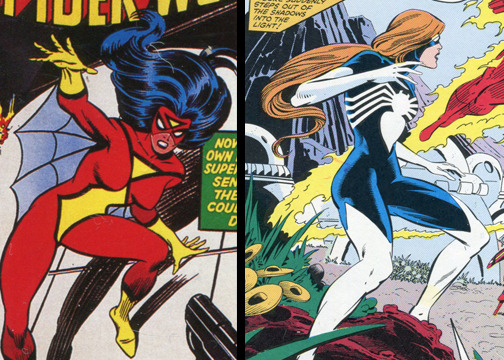
IMAGE: The first and second characters to use the name “Spider-Woman”.
The Rough Years: Weird Anatomies, Revealing Costumes and Women in Fridges
If one had only recently gotten involved in looking at superhero comics and the way they portray women, they could be forgiven for accepting the stereotype promoted by the Simpsons of comic book fans being overweight, sarcastic shut-ins who are incapable of talking to women. The representations, especially the most popular ones, could be troubling. Some major examples include the depictions of women in the work of Frank Miller and the general artistic aesthetic of the late 1980s and early 1990s.
Frank Miller is widely regarded as one of the Godfathers of modern comics, through his revolutionary work on characters like Daredevil and Batman. Over time, some of his work has proven controversial. His portrayal of women has especially drawn controversy. In some of Miller’s stories, characters like Catwoman are turned into dominatrixes and others, like Elektra, are created to much acclaim only to be murdered as plot devices to motivate the male heroes. Daniels (1991) notes, but does not really comment on, the fact that Elektra is “killed by another criminal and died in her blind lover’s arms” (p. 190). To be fair, Miller did bring the character back to such acclaim that she has sometimes trounced Daredevil in terms of popularity. These characters are also drawn in a very sexualized manner by Miller, especially in his later work. An example of this would be the character of Carrie Kelly, a female Robin first introduced in “The Dark Knight Returns” (Miller, 1986). Portrayed as something of a tomboy in the original story, Miller draws the character accordingly. Fast forward to the early 2000’s, when Miller revisited the story in the sequel “The Dark Knight Strikes Again” (Miller, 2001). Carrie has moved from the Robin persona to one based on Catwoman, complete with skin-tight latex. The depiction is more controversial, and the case for balance or excuses for Miller is undercut by the inclusion in the story of protest leading faux superheroine strippers and a naked news anchor. Cultural change might justify the changes, but the depictions remain somewhat controversial.
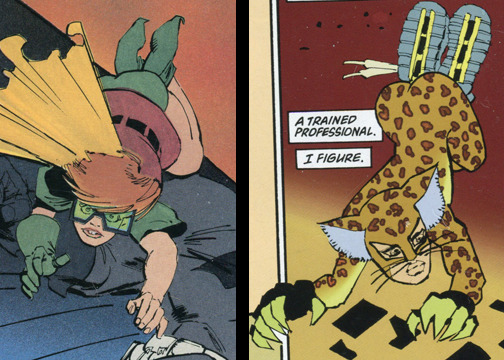
IMAGE: Miller’s drawings of Carrie Kelly in the 1980s and again in the early 2000s.
It would be extremely unfair to present the example of Miller’s work as an outlier. Indeed, looking back at the comics of the time, his representations were modest. The late 80s and early 90s brought in bodybuilder bodies for male characters and hourglass, supermodel frames for women. To go through and list all of the examples would take forever and a day, so we will use the magic of images to show a brief sampler, and then focus on one particularly flamboyant and infamous example of sexualization.
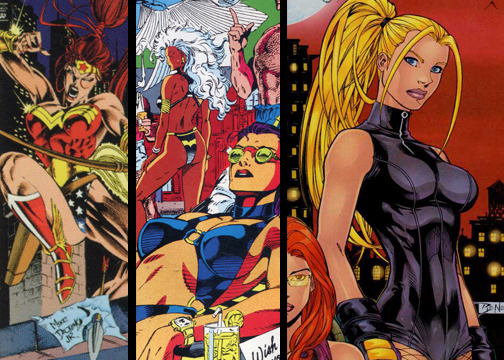
IMAGE: Examples of female representation from 1980/90s superhero comics.
Illustrators like Jim Lee, Rob Leifeld, Todd McFarlane and others lead the way in stylizing characters to the extreme during this time period. A visual look at the drastic changes wrought by these trends can be seen in the Fantastic Four’s Invisible Woman (no longer a Girl). As Sanderson (2000) points out, the Invisible Woman’s designed was updated by artists over the years (p. 39). The decades passed and as we hit the 90’s, her costume goes from essentially a jumpsuit, to a body sock, to a bathing suit, complete with a cutout 4 over the bosom. This apparently was so drastic a change that it only lasted a handful of issues before converting to a more conservative dress once again. This is an extreme example, but such occurrences were everywhere.
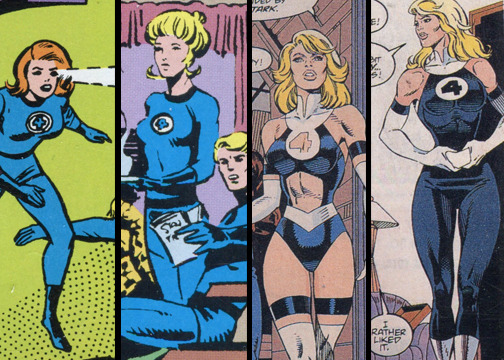
IMAGE: Invisible Woman Costume updates over the years.
This state of affairs continued during the booms and implosion of the comics industry in the 1990s. The visual elements continue to this day, though they are not nearly as dominant as they once were. There are, of course, many, many comics getting published at any one time, and many different representations and styles going into them, but the trend was not subtle and set the stage for what would happen in the new millennium.
In 1999, comics writer Gail Simone set up a website called “Women in Refrigerators”, which kept a running tally murdered, raped, or otherwise afflicted superheroines in comics. The term references a Green Lantern story where the titular hero’s girlfriend is killed and shoved into his refrigerator. The point of the moniker was to point out the degradation that several female heroes in comics were exposed to. The fact that they were often used simply as props for the male heroes or “depowered, raped, or cut up and stuck in the refrigerator” (Simone, 1999) was pointed out vigorously, which related to how female superheroes were being represented at this time. This was a fairly revolutionary statement and website to create, and seeded the ground for debate as the 2000’s rolled in.
CHANGING TIMES and FEMALE FANS: Modern Developments
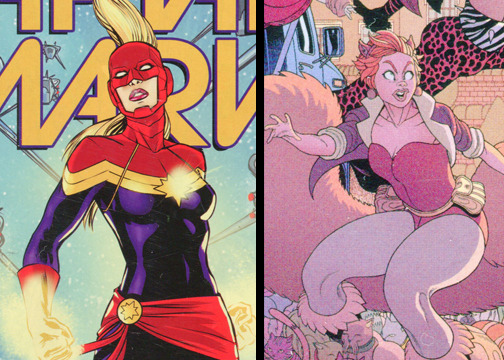
IMAGE: Modern female heroes Captain Marvel and Squirrel Girl
As we move into the present day, publishers began to wake up to the need to update how they represent women in the medium. Thanks to things like Women in Refrigerators and Gamergate, DC, Marvel, and others started presenting female heroes differently.
Examples of addressing the problems in the past interpretation of women include efforts by Marvel to replace male leads with female leads and intentionally take off monikers like “woman”, “she-”, or “girl”. As Khal (2016) notes, Wolverine, Iron Man, Thor, and most famously (and for the second time, oddly enough) Captain Marvel monikers were all passed on to women. No “girl” monikers were affixed to the new titles. Captain Marvel was actually an example of a clone character seizing the mantle of the original character, and has completely eclipsed the original space policeman who originated the name. She has proven so successful in recent years that Eisenberg (2017) reports she will be the star of the first female-lead titled Marvel Movie.
Marvel has also been actively promoting new and/or obscure characters that harken back to the rebel spirit of characters like Wonder Woman and Fantomah when they first came out. Marvel Characters like Squirrel Girl are quirky and have a distinctly millennial tilt. They are drawn in a modern style that doesn’t rely on gross exaggerations or conservative staples of the years before. These new characters and the updated usage of others have coincided with somewhat mixed reactions (Hibberd, 2017) but a much more diverse audience.
DC has been busy updating characters as well. Revolutionary takes on characters like Batgirl, who has been popular enough to spark work on a new solo film by Joss Whedon (Foutch, 2017), have similarly brought in new readers and more positive representations of female heroes. Granted, the exploding popularity of characters like the often abused and forgiving Harley Quinn, as seen by the plethora of merchandise based on her appearance in the film Suicide Squad (Amazon, 2017) can sometimes be seen as a step backward. Regardless, there has been noticeable improvement within the last 10 years.
Over time, it’s been a matter of two steps forward and one major step back for superheroines in comics, both in how they are written and how they are portrayed on the page. While it’s taken a few too many decades, it is a positive sign that so many new characters and exciting developments have been happening so recently. Hopefully this trend continues into the future.
Sources used for this article include:
Amazon. (2017). Harley quinn search results [Data set]. Retrieved from https://www.amazon.com/s/ref=nb_sb_ss_c_1_8?url=search-alias%3Daps&field-keywords=harley+quinn&sprefix=Harley+Q%2Caps%2C163&crid=1NIBPWFGP5DWD
Daniels, L. (1991). Marvel: Five fabulous decades of the world’s greatest comics. New York, NY: Harry N. Abrams, Inc.
Daniels, L. (1999). Batman: The complete history. San Francisco, CA: Chronicle Books LLC.
Desta, Y. (2017 October 10). How Gloria Steinem saved wonder woman. Vanity Fair. Retrieved from https://www.vanityfair.com/hollywood/2017/10/gloria-steinem-wonder-woman
Eisenberg, E. (2017). Captain marvel’s movie: What we know so far. Cinema Blend. Retrieved from https://www.cinemablend.com/new/Captain-Marvel-Movie-What-We-Know-So-Far-70431.html
Foutch, H. (2017 March 30). Report: Joss whedon’s “batgirl” movie will draw from the new 52. Collider. Retrieved from http://collider.com/batgirl-movie-joss-whedon-new-52/#images
Hibberd, J. (2017 April 3). Marvel outrage after diversity, female characters blamed for sales. Entertainment Weekly. Retrieved from http://ew.com/tv/2017/04/03/marvel-female-diverse-characters-hurting/
Howe, S. (2012). Marvel comics: The untold story. New York, NY: HarperCollins Publishers.
Khal. (2016 July 7). With the new iron man, marvel continues to move forward and diversify its superheroes. Complex.com. Retrieved from http://www.complex.com/pop-culture/2016/07/marvel-comics-switching-characters/
Kistler, A.S. (2015 October 23). Supergirl: A brief history of the last daughter of krypton. Tor.com. Retrieved from https://www.tor.com/2015/10/23/supergirl-a-brief-history-of-the-last-daughter-of-krypton/
Lepore, J. (2014). The secret history of wonder woman. New York, NY: Alfred A. Knopf.
Miller, F. (2001-2002). Batman: The dark knight strikes again 1-3. New York, NY: DC Comics
Miller, F. (1986). Batman: The dark knight returns 1-4. New York, NY: DC Comics
Morris, J. (2015). The league of regrettable superheroes. Philadelphia, PA: Quirk Books.
Sanderson, P. (2000). Marvel universe. (2nd. ed.) New York, NY: Harry N. Abrams, Inc.
Simone, G. (1999) Women in refrigerators. Retrieved from http://lby3.com/wir/
Sims C. (2016 October 7). Ask chris #310: Starting the silver age. Comics Alliance. Retrieved from http://comicsalliance.com/ask-chris-310-starting-the-silver-age/
Wallace D. (2014). 1940s. In Gilbert, L. (Eds.), Dc comics: A visual history (2nd. ed.) (pp.28-61). New York, NY: DK Publishing.
3 notes
·
View notes
Text
Story You May Have Missed
How San Diego can you get?!
Graduate of San Diego's Will C. Crawford High School, founding committee member of the San Diego Comic-Con, one of Jack Kirby's San Diego Five String Mob, and leader of Dr. Raoul Duke and His All-Human Orchestra, may I present my brainy professor pal -- Roger Freedman!!! Scott Shaw post

Roger Freedman, Class of 1969
UCSB professor recalls early days of San Diego’s premiere event

COMIC-CON 2019: PROFESSOR DOUBLES AS A COMIC BOOK HERO
You may know Roger Freedman as a professor of physics at UCSB. Look again.
On Page 8 of Superman’s Pal Jimmy Olsen 144 (1971), Dr. Freedman, with his long red hair and glasses, is standing with the San Diego Five String Mob, as the Guardian and Superman look on. “Dig those weird instruments they play!” Terry Dean tells the superheroes.
Little do the trio know that Dr. Freedman and his friends are actually in league with one of DC Comics’ most powerful villains – Darkseid! Egads!
Dr. Freedman became immortal in DC Comics canon because of someone he met at the first San Diego Comic-Con: the legendary Jack Kirby.
Mr. Kirby (1917-1994) co-created Marvel Comics’ Iron Man, Captain America, Black Panther, Fantastic Four, and later created DC Comics’ Fourth World stories, which featured Darkseid and his fiery world Apokolips.
From the start, San Diego Comic-Con had big names, even if the first convention only had 300 or so people attending, a modest dealers room with card tables and comics books and movie posters for sale, and only one room with speakers and movies.
“You didn’t see the multi-media stuff you see today,” Dr. Freedman, 66, told the News-Press last week in a meeting room at UCSB Broida Hall.
The first convention, then called San Diego’s Golden State Comic-Con, took place Aug. 1-3 at the U.S. Grant Hotel, and tickets cost $3.50 for three days.
Fans got their money’s worth. Besides Mr. Kirby, the first convention featured legendary sci-fi authors Ray Bradbury and A.E. Van Gogt, Dr. Freedman, 66, said. “That really impressed me.”
Earlier this month, Dr. Freedman spoke on panels about the convention’s history and the science of HBO’s “Game of Thrones” at Comic-Con International: San Diego – specifically the 50th San Diego Comic-Con.
It has grown exponentially from what Dr. Freedman experienced that first year.
Around 130,000 fans, many of them dressed as superheroes and villains and characters from other realms of fantasy and animation, walked around a convention that has grown beyond the San Diego Convention Center and taken over nearby hotels and the downtown historic Gaslamp Quarter.
Fans often wait for many hours to see the latest stars, especially in Ballroom 20 or Hall H, which seats 6,500 fans. There’s a long history of fans camping out overnight in grassy areas and parks to get into Hall H, where this year Sir Patrick Stewart talked about reprising his famous “The Next Generation” character in the upcoming “Star Trek: Picard” series on CBS All Access.
Only Mr. Kirby knew how big San Diego Comic-Con would get, Dr. Freedman recalled.
“Jack made the comment, ‘Some day everything is going to be at this convention. All the TV studios are going to be here. All the media is going to be here,’ ” Dr. Freedman said, recalling a story he heard from comic book and TV writer Mark Evanier. “”Mark’s response was, ‘Sure, Jack, whatever you say. Let’s go get lunch.’
“Jack was exactly right,” Dr. Freedman said.
The lifelong sci-fi fan recalled how much easier it was to get an autograph or talk with a star in those early years.
“You would see these guys sitting around the table or around the pool. You would say, ‘Hey, Jack, can you sign this book for me?’ ‘What was it like working with Stan Lee?’ ” Dr. Freedman said. “We didn’t know you weren’t supposed to do that.”
Dr. Freedman and his friends chatted with Mr. Kirby at the first San Diego Comic-Con, and convention founder Shel Dorf later called Mr. Kirby to ask if they could visit him at his Thousand Oaks home. The DC and Marvel Comics legend said that would be fine, and Dr. Freedman recalled one conversation in particular with Mr. Kirby.
“Jack said, ‘I can put anybody in a comic book,'” Dr. Freedman said. “Someone said, ‘How about us, Jack?'”
Mr. Kirby found a way with Superman’s Pal Jimmy Olsen 144.
“It’s us and Darkseid against Superman,” Dr. Freedman said. “I’m actually part of the DC universe.”
Dr. Freedman skipped San Diego Comic-Con in 1971 when it was at UC San Diego, but returned in 1972 and worked on the con’s program book when the event was at El Cortez Hotel. Besides Mr. Kirby, the special guests included Marvel Comics editor Roy Thomas and Looney Tunes cartoons director Bob Clampett.
Dr. Freedman said his first participation in the masquerade, the Comic-Con event that has grown into elaborate skits with effects and fans in impressive costumes, came in 1974. As an alternative to all the “Star Trek” fans at Comic-Con, he and his friends promoted fandom for “Gilligan’s Island” and went on stage to perform the 1960s CBS show’s theme song, complete with a prop for the line, “The tiny ship was tossed.”
“I had a plastic boat I threw into the audience,” Dr. Freedman said.
“For a while, I was the lead singer of a band that was only at Comic-Con. It was Dr. Raoul Duke and His All Human Orchestra,” Dr. Freedman said. “Dr. Raoul Duke” was a pseudonym for journalist and author Hunter S. Thompson.
Dr. Freedman said Comic-Con grew quickly in the 1970s, thanks to San Diego’s proximity to sci-fi authors and comic book talent and its draw as a vacation destination for the New York City-based comic books industry.
“I can tell you exactly where things got to get big, when the transition started from the original Comic-Con to today,” he said. “It was 1976 when there were 2,000 to 3,000 attendees. The word started getting out to Hollywood types that Comic-Con existed. They thought, ‘We have this movie coming out next year. We think people might be interested in it.’ “
The film was “Star Wars” (1977).
Behind-the-scenes crew sold promotional merchandise at a card table in the dealers room, Dr. Freedman said.
“If I had been smart, I would have bought every sticker and poster (in the dealers room),” he said. “I would be selling them now, and we would be having this conversation on my yacht. But I didn’t, so we’re not.”
Dr. Freedman, who earned his doctorate in physics in 1978 at Stanford University and became a teaching professor of physics in 1983 at UCSB (following a two-year post-doctoral program), continued to attend Comic-Con until the mid-1980s.
When he returned in 2009 for the 40th Comic-Con, he was surprised.
“I was pretty amazed by how large it had gotten,” he said. “I had heard second-hand, but I was pretty amazed by how large it had gotten. It was like 40 of the Comics Cons I remember happening simultaneously in the same room, which was awesome.”
Mr. Freedman, who came back in 2010 and this year, sees the future for San Diego Comic-Con as secure.
“The number of people who want to get in exceeds the number of people get in. It’s up there with Coachella or Burning Man tickets.” *Reposted article from Santa Barbara News-Press by Dave Mason of July 28, 2019.
0 notes
Link
https://ift.tt/3zQCICk #


The classic sitcom The Munsters was a popular hit show in the 1960s until Batman‘s success led to its cancelation. Created by Allan Burns and Chris Hayward, who produced Leave It To Beaver, The Munsters originally aired at 7:30 pm on CBS from September 24, 1964, to May 12, 1966. In season 1, The Munsters was the #18 show on television, tied with Gilligan’s Island. But in its second season, ratings dropped precipitously and The Munsters was #61 – and it’s believed Batman’s 1960s show was to blame.
The Munsters starred Fred Gwynne as Herman Munster, the head of the household who is also Frankenstein’s monster. His wife, Lily, was played by Yvonne De Carlo while Lily’s father, Grandpa (AKA Count Dracula), was played by Al Lewis. Beverley Owen (later replaced by Pat Priest) played Marilyn, the Munsters’ conventionally beautiful teenage niece while Butch Patrick rounded out the Transylvanian-American family as Eddie Munster, a young werewolf. Although color television was already widespread in households when The Munsters debuted in 1964, the quirky comedy was filmed in black and white to mimic the look of Universal Studios’ classic monster movies. At its height, The Munsters earned higher ratings as the similarly-themed The Addams Family on ABC.
Related: Why A Munsters Reboot Took So Long To Make
However, on January 12, 1966, The Munsters faced a new threat the macabre clan of monsters living at 1313 Mockingbird Lane couldn’t overcome: Batman, starring Adam West as the Caped Crusader and Burt Ward as Robin the Boy Wonder, premiered “in color” on ABC and brought splashy comic book derring-do to network television. Batman was an instant smash that kicked off a merchandising bonanza dubbed “Batmania” in 1966, but it was the superhero show’s unique twice-weekly airing schedule that gravely impacted The Munsters. Batman aired at 7:30 pm on Wednesdays and each episode ended with a cliffhanger to be resolved in the second episode that aired Thursdays at 7:30 pm – directly opposite The Munsters. With the audience more interested in seeing how Batman and Robin escaped each week’s deathtrap on Thursday nights, The Munsters‘ ratings eroded.

Butch Patrick confirmed Batman‘s deleterious impact on The Munsters‘ ratings to Daily Mail in 2019. In a look back on the series that made him a child star, Patrick said that Batman “‘just came in and took our ratings away.” The Munsters‘ popularity couldn’t compete with the bonafide pop culture phenomenon Batman became during its first season. The Munsters was canceled by CBS in May 1966, just five months into Batman season 1.
However, The Munsters‘ 70 episodes that were produced soon entered syndication and grew even more popular over the succeeding decades. With the advent of cable television, The Munsters became a mainstay of Nick at Nite on Nickelodeon and it also aired on Cartoon Network’s Boomerang. The Munsters‘ pop culture imprint endured thanks to a loyal cult following, and the gothic family sitcom enjoyed a few revivals and reboots. A sequel show, The Munsters Today, aired from 1988-1991 and ran for 72 episodes. Hannibal creator Bryan Fuller rebooted The Munsters in 2012 although his series, Mockingbird Lane, only aired as a TV movie since NBC didn’t greenlight it as a series. The Wayans brothers and Seth Meyers took a crack at rebooting The Munsters and, in 2021, Rob Zombie was hired to direct The Munsters movie, which will get a theatrical release and stream on Peacock.
Ironically, Batman‘s own popularity was short-lived as the “Batmania” fad fizzled out by the show’s second season. An attempt to bolster ratings by introducing Batgirl (Yvonne Craig) and only airing the show once a week didn’t revive the Dynamic Duo’s fortunes and Batman was canceled at the end of season 3 in 1968. But, like The Munsters, Batman also remained popular in syndication and both series continue to be pop-culture touchstones over 55 years later.
Next: Everything We Know About Rob Zombie’s Munsters Reboot
#marvel #avengers #marvelcomics #spiderman #mcu #ironman #comics #captainamerica #thor #avengersendgame #marvelstudios #xmen #dc #marveluniverse #art #cosplay #tomholland #hulk #disney #comicbooks #dccomics #peterparker #tonystark #blackwidow #marvellegends #endgame #deadpool #marvelcinematicuniverse #loki #bhfyp
The post How Batman ’66 Killed The Munsters | Screen Rant appeared first on undertheinfluencerd.net.
#entertainment, screenrant #tumblr #aesthetic #like #love #tumblrgirl #follow #instagram #photography #instagood #likeforlikes #s #likes #art #cute #o #girl #followforfollowback #a #tumblrboy #grunge #fashion #photooftheday #tiktok #l #photo #sad #k #frases #f #bhfyp
0 notes
Text
2017: #2-WITCHES
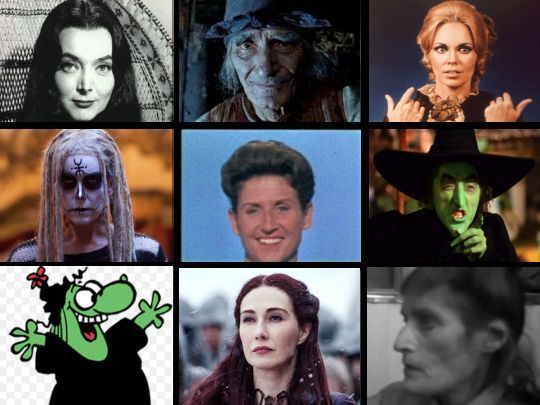
Round about the cauldron go; In the poison’d entrails throw. Toad, that under cold stone Days and nights has thirty-one Swelter’d venom sleeping got, Boil thou first i’ the charmed pot. Double, double toil and trouble; Fire burn, and cauldron bubble.
- Macbeth.
It is now time to get to the bottom of the topic of witches - but we are staying away from witches’ bottoms! Once the topic of witches is raised, the cauldron of creepiness starts bubbling out witches all over the place. The Wicked Witch of the West is the archetypical witch, with the long pointy nose, green skin, black clothing, and conical witch hat. There were other Oz witches such as Glinda the Good Witch. Long before Oz, Greek mythology provided Medea and Circe. In Jason and the Argonauts, Medea mainly made potions and then ran off with Jason. Homer’s Odyssey had Circe trapped on an island turning sailors into pigs. The Middle Ages bubbled up Morgan Le Fay in the King Arthur legend. Shakespeare wrote famous plays with witches, such as in Macbeth. Witches were also featured in quite a few fairy tales. The Brothers Grimm’s Hansel and Grettel is perhaps the most famous witchy fairy tale. Mikhail Bulgakov’s The Master and the Margarita includes witches and the Devil galavanting with glee in Russia. Lloyd Alexander’s The Black Cauldron features the three witches of Orwen, Orgoch, and Ordxu who are actually helpful. Fritz Leiber wrote of witches in his novels, Conjure Wife and Our Lady of Darkness. Anne Rice wrote a three-book series, the Lives of the Mayfair Witches. But beyond literature, witches are also bubbling up in film.
I Married a Witch was a 1942 comedy, but 1960’s Black Sunday is horror. 1962’s Burn, Witch, Burn was based on Leiber’s Conjure Wife. Vincent Price hunted witches in The Conqueror Worm, but he was the villain persecuting the innocent. Christopher Lee was voodoo-dolled by his witch daughter in The House That Dripped Blood (see 2018: #1-GREAT HORROR FILM ACTORS). Rosemary’s Baby delivered us a delightfully witchy Ruth Gorden. The Witches of Eastwick had three witches summoning the Devil, Jack Nicholson. The Blair Witch has almost appeared in three films and probably has the greatest name recognition for a witch in popular culture. Sam Raimi’s Drag Me to Hell was about a witch’s curse. Even Marvel superhero films have included the Scarlet Witch (see 2017: #10-SUPERHEROES). Witches bubble up in the cauldron of creepiness beyond film and into television programs.
The Addams Family includes the witches of Grandmama as well as that of Morticia. Lara Parker portrayed the regular witch character, Angelique, in the original Dark Shadows tv series (see 2016: #7-GUIDE TO DARK SHADOWS). A few years later she played a witch in Dark Shadows’ creator, Dan Curtis’ other cult horror tv series, The Night Stalker, in the episode, The Trevi Collection (see 2015: #5-GUIDE TO THE NIGHT STALKER). There was a comedy tv series with witches, Bewitched, including the witches Samantha and Aunt Haggadah. Witches have made appearances in Doctor Who in the episodes, The Daemons and The Shakespeare Code which offers witches Mother Bloodtide and Mother Doomfinger (see 2018: #2-GUIDE TO DOCTOR WHO). The three-season series, Penny Dreadful, centered around the witch Vanessa Ives who was well-played by Eva Green. American Horror Story had an entire season, Coven, about witches and introduced us to such noteworthy witches as Cordelia Foxx and Misty Day; the Roanoke season featured Lady Gaga as the primal witch Scathach. Most recently, Game of Thrones has included the child-sacrificing witch Melisandre, the red priestess, who resurrected Jon Snow. Men can also be witches as seen with Lafayette in the True Blood series. There are even cartoon witches such as Winnie the Witch, Popeye’s watery Sea Hag, and there is Broomhilda from the Chicago Tribune comic strip. They are also in video games such as in the Dark Souls series with Karla the Witch and the fiery half-spider, half-woman, Chaos Witch Quelagg. The cauldron of creepiness overfloweth with a bevy of witches!
What sort of classifications can witches be put into to better understand them? Dungeons & Dragons is a good resource for monster listings and the game includes: Sea Hags, Night Hags, and Annis. There are evil black witches and white good witches, even neutral gray witches. Most witches are alchemists and make potions. Some witches have additional specialization of their magical ability, such as with Circe polymorphing people into pigs. There are solitary witches in comparison to covens of witches. But there are not too many classifications of witches. Desert dwelling witches are certainly not sandwitches, hold the mayo! The term, death hag, is not a classification of witch, but is a type of person who morbidly goes to cemeteries, reads obituaries, and indulges in other death-related past-times. What best distinguishes witches is what they do.
What do witches do? Witches tend to have the same goals and activities in mind. They primarily stand over their large cauldrons cooking up hideous magical stews and potions; in a way, they are pharmacists. The common crazy concoction they cook up consists of children and babies; few witches are vegetarians. Witches are often known to lure children, catch them, cook them, and eat them. Otherwise, they have to go to “witches supermarkets,” cemeteries, and dig up dead children. Witches cannibalistic proclivities primarily exist so they can make themselves younger. Witches are often very old. To make themselves either appear younger or actually physically become younger are their goals. This is seen with the famous illusion of the Young Lady or Old Hag. Witches deeply need to appear young and innocent, and they particularly enjoy the deceit of helping witch finders. In The Blair Witch Project, no physical form of the Witch is ever seen. However, early in the film, an eccentric town local, Mary Brown, is interviewed who very much looks like a witch as well as having interests and educational degrees beyond her age. I have always thought Mary Brown to be the normal human appearance of The Blair Witch. Witches also fly on brooms, often coating the broomstick or themselves wth a greasy oil they make from the fat of cooked children. Witches enjoy staying out late at night, generally doing evil things, and they hang out with the Devil and his minions. Midnight is known as the Witching Hour. Witches often summon up horrible things from beyond as well as have familiars reporting to them, usually in the form of black cats. They cast spells and excel in black magic. Witches often seem to feed off of fear itself, as seen in the Blair Witch films with wooden x-shapes that are left about decorating the forest to terrify the victims (see 2017: #1-THE PSYCHOLOGY OF HORROR).
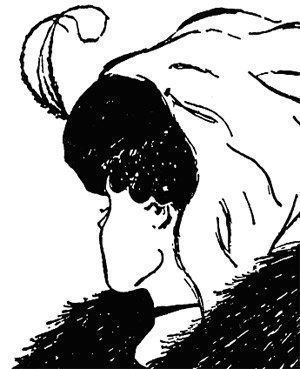
Which are the most well known, supposedly real, witches? Folk tales do provide us with three well known witches. Baba Yaga comes from Russia, first written about in 1755. She was the typical old grandmotherly witch who created a hut that walked around on large chicken feet. She could be harmful or helpful, but was rumored to have a nasty nose. Black Annis is a witch rumored to live in a cave near Leichestershire, England since the Middle Ages (see 2011: #8-MONSTERS ON THE LOOSE 3). Black Annis is certainly less friendly than Baba Yaga since she is known to use her iron talons to grab children and devour them, later wearing their skins around her waist since she doesn’t shop at Versace. The Witch of Endor is not some witch from a Star Wars film ruling over the moon of the Ewok teddy bear people. The Witch of Endor is from the Book of Samuel from The Bible. She sees spirits rising from the ground and is a helpful and friendly witch…from The Bible?
Which is the most powerful fictional witch? Circe was either the daughter of Helios, the sun god or Hecate, the goddess of witchcraft. That would make her at least half divine, yet she was outwitted by Odysseus. The Graeae are a trio of divine witches from Greek mythology and are related to Medusa (see 2013: #2-MEDUSAS). However, the Graeae are old and share one eye, so they are handicapped. The Graeae is what inspires trios of old witches appearing in fiction such as in Macbeth. The Blair Witch certainly makes the top three since it is said to have killed more than ten people, often in rather groody and gory ways. 2015’s The Blair Witch showed the form of the Blair Witch if you freeze-framed the movie. It was very tall, thin, mostly naked, with stringy black hair and impossibly long arms and legs. Probably the monster form of Mary Brown. The Blair Witch clearly has little helpers or familiars, and it may have illusionary, hallucinatory, and mind altering abilities. It demonstrates an ability of manipulating time unlike any other witch. The Blair Witch may be the most powerful witch we have almost seen. But flying monkeys sure are cool.
In history were there really witches? No. Not at all. Old women who were sick were persecuted, tortured, and killed. It was an issue of people with bad brains contaminated with superstition and steeped in stupidity blaming others for their mishaps. Then those who were insanely religious moved into to glorify themselves while they tortured, oppressed, and killed others. Witch hunting clearly involved oppression of women, the mentally ill, and included the persecution of sexual deviancy. They fueled their witch hunting by believing that witches were going to unleash the Devil and bring about the Apocalypse. Books were written providing instructions on witch hunting, with the most well known book being the Malleus Maleficarum (The Hammer of Witches) from 1486. “Early modern artistic representations of witches articulated and perpetuated beliefs about witch’s bodies, emphasizing their diabolical power and moral weakness. The typical witch was depicted as old, and often naked (to display her sagging breasts, a sign of depleted and supposedly repellent femininity), with flying hair (a code for errant and uncontrolled sexuality). The cauldron—itself a perversion of female domesticity— also connoted a powerful, almost volcanic vagina (The Encyclopedia of Witches, p 132).”
What are the best witch films to watch for Halloween? The most recent critically successful film release was 2015’s realistic, The Witch. Rob Zombie’s The Lords of Salem is quite good. The Masters of Horror tv series episode, The Dream in the Witchhouse, is a particularly good and chilling adaptation of an H.P. Lovecraft story. But the original The Blair Witch project is one of the best. There are three magical foreign witch films I recommend. Suspiria is Italian director, Dario Argento’s best film. It was released in 1977 and includes the peculiar Udo Kier and Joan Bennett from Dark Shadows (see 2016: #7-GUIDE TO DARK SHADOWS). Haxan is a 1922 Swedish documentary that was banned in the US; watch the version narrated by William S. Burroughs. It is a creepy cornucopia of dark witchy images. Viy is a 1967 Russian film worth seeking out about a young priest who must spend the night in a haunted church; the special effects are unique.
I first became aware of witches when I was very young because a witch appears on Gypsy Witch Fortune Playing Cards which my grandmother owned. Have I ever actually known a witch? Yes, I worked with her at a strange retail store many moons ago (see 2009: #11-THE DIABLERO, THE WITCH, AND THE WARDROBES). But lots of people call themselves witches these days, for lots of reasons. Witches have permeated our culture from literature, film, tv, even music. Mort Garson’s delightfully danceable, 1968 album, The Wozard of Iz, has all sorts of witchyness. The topic of witches is very much like the two sides of the moon. One side is dark, nonfiction, and is full of innocent people being tortured and killed thru witch hunts. But the other side is illuminated, really interesting and creative, made of fiction and with possibilities of Halloween costumes and spooky movies. Life is a witch, then you fly.
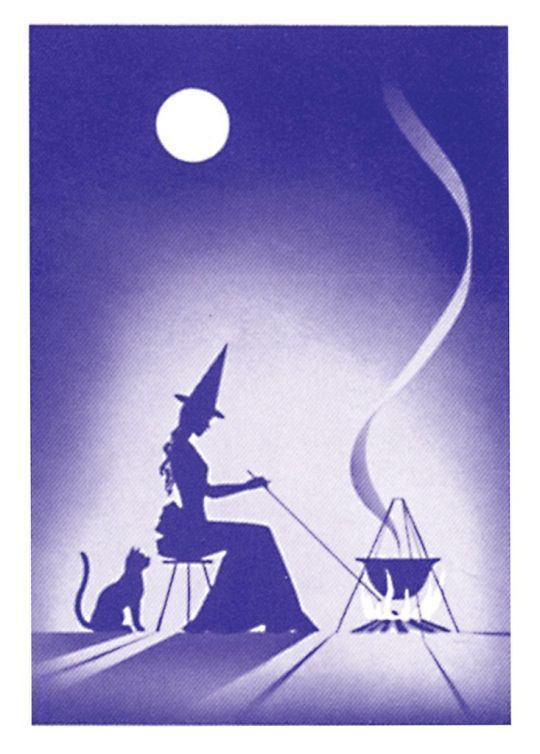
5 notes
·
View notes
Text
Arrowverse: Crisis On Infinite Earths Air Date, Story & Cast Details
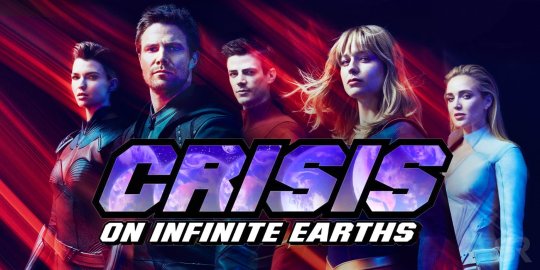
Here's everything to know about 2019's Arrowverse crossover, Crisis On Infinite Earths. Based upon the seminal 1985-1986 Crisis On Infinite Earths DC Comics maxi-series created by writer Marv Wolfman and artist George Perez, this year's Arrowerse crossover will be the superhero universe's biggest event yet and will span every Arrowverse series on The CW: The Flash, Supergirl, Arrow, Batwoman, and DC's Legends of Tomorrow.
Since the original Arrowverse crossover, Flash Vs. Arrow, in 2014, the annual crossover events have escalated in size and scope as The CW's superhero shared universe has grown. In 2016, The Flash and Arrow were joined by Supergirl and Legends of Tomorrow in Invasion! as the heroes teamed up to repel an attack by the alien Dominators. 2017's Crisis On Earth-X saw the wedding of Barry Allen (Grant Gustin) and Iris West (Candice Patton) interrupted by the heroes' Nazi doppelgangers from Earth-X. In 2018's Elseworlds, the Arrowverse grew even more by introducing Batwoman (Ruby Rose) and Gotham City, setting the stage for her new solo series. Elseworlds not only featured Green Arrow (Stephen Amell) and the Flash switching bodies, but the debut of the Monitor (LaMonica Garrett) also laid the groundwork for 2019's Crisis On Infinite Earths crossover event.
Related: Why A Smallville Crossover In Crisis On Infinite Earths Is So Difficult
It could be said that the Arrowverse has been building to Crisis On Infinite Earths for many years, in the same way that the Marvel Cinematic Universe culminated with Avengers: Endgame. Indeed, it's hard to imagine an Arrowverse event bigger than Crisis On Infinite Earths, which could potentially alter The CW's shared universe in fundamental ways - just as the comic book series redefined the DC Universe in the 1980s. Further, Crisis On Infinite Earths will honor previous superhero movies and TV series that influenced the Arrowverse by bringing in special guest stars, which should create major fan service moments. Here is everything to expect from Crisis On Infinite Earths.
Crisis On Infinite Earths Air Dates

Keeping with the monumental scope of the comic book story, Crisis On Infinite Earths will be the biggest Arrowverse crossover yet. The mega-event will span all five Arrowverse series and will be broken up into segments, with the first three hours airing on three consecutive nights in December 2019 and then the final two hours wrapping up the Crisis on the same night in January 2020 after the annual holiday hiatus. Here's how Crisis On Infinite Earth's schedule breaks down:
Supergirl: Sunday, December 8 @ 8pm - Crisis On Infinite Earths, Part 1
Batwoman: Monday, December 9 @ 8pm - Crisis On Infinite Earths, Part 2
The Flash: Tuesday, December 10 @ 8pm - Crisis On Infinite Earths, Part 3
Arrow: Tuesday, January 14 @ 8pm - Crisis On Infinite Earths, Part 4
Legends of Tomorrow: Tuesday, January 14 @ 9pm - Crisis On Infinite Earths, Part 5
Note that this Crisis schedule moves Supergirl up to 8pm on December 8; it otherwise airs at 9pm during the 2019/2020 Arrowverse season. Batwoman, which will normally air Sundays at 8pm, moves to Monday night for the Crisis. Also, the final two hours of Crisis on Tuesday, January 14 bumps The Flash from its normal night and moves Arrow up an hour from its normal 9pm slot this season. Additionally, Legends of Tomorrow's Crisis conclusion is considered a "special episode", with the time-traveling series getting a proper season 5 premiere later in January.
Related: Crisis on Infinite Earths: Why Kevin Conroy Is NOT Playing Batman
Crisis On Infinite Earths Story Details

The Crisis On Infinite Earths comics series eliminated the DC Comics Multiverse and merged all of its disparate continuities into one Prime universe. It involved the superheroes banding together to defend their various worlds as they're caught in the middle of a war between two cosmic beings who are siblings and opposites: the Monitor and the Anti-Monitor (both will be played by LaMonica Garrett). Given that the Crisis is about entire worlds being destroyed and merged into one reality, many fans speculate that Crisis On Infinite Earth's endgame is to do the same to the Arrowverse, specifically that it will bring Supergirl, which is set in Earth-38, into Arrow's Earth-1.
The Arrowverse's Crisis will pick up story threads that began with 2018's crossover, Elseworlds, where the Monitor made a secret bargain with Oliver Queen after the Green Arrow sacrificed himself to save Supergirl (Melissa Benoist) and the Flash. Arrow season 7 ended with Oliver leaving with the Monitor to prepare for the Crisis, the ramifications of which will be seen in Arrow season 8. Crisis On Infinite Earths will also pay off The Flash's story since season 1 in which a Central City newspaper's headline dated 2024 read "Flash Missing - Vanishes in Crisis". The events of The Flash season 5's finale moved the timeline of the Crisis up to 2019. Meanwhile, the Monitor made appearances in Supergirl and Legends of Tomorrow's season finales as well, setting up their roles in the Crisis.
Crisis On Infinite Earths also ominously teases major deaths: Oliver Queen could meet his demise since Arrow is ending with season 8. However, in the comics, both the Flash and Supergirl died saving the universe during the Crisis - could their tragic fates be echoed in the Arrowverse crossover as well?
Which Arrowverse Shows Are Crossing Over?
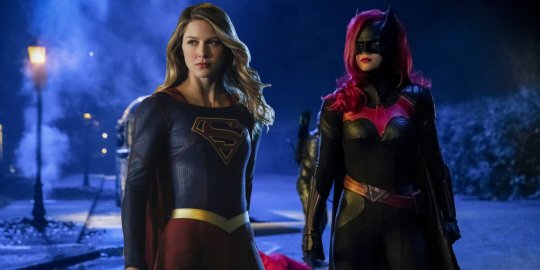
Not only are all five Arrowverse series - Supergirl, Batwoman, Arrow, The Flash, and Legends of Tomorrow - taking part in Crisis On Infinite Earths but characters from Black Lightning will also join the crossover. Black Lightning, which was originally developed for another network like Supergirl, isn't part of the Arrowverse but Crisis On Infinite Earths could end up changing the reality of the superheroes of Freeland as well.
Related: Crisis on Infinite Earths: Predicting Burt Ward's Arrowverse Character
Elseworlds also introduced Batwoman into the Arrowverse, setting the stage not just for her solo series on The CW but for the red-haired vigilante's role in Crisis On Infinite Earths. This will include a team-up with Batwoman and Supergirl since the two World's Finest heroines really hit it off when they met in Elseworlds.
Superhero Actors Returning For Crisis On Infinite Earths
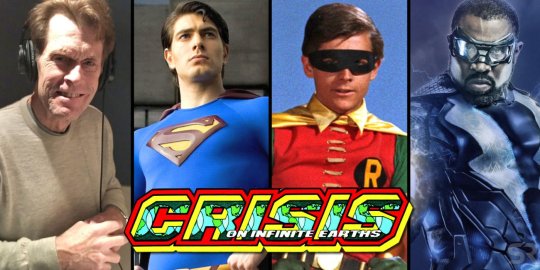
The Arrowverse is already bursting at the seams with superheroes across the five series, but Crisis On Infinite Earths will bring in even more heroes and villains to honor past DC Comics TV series and movies.
First, Crisis On Infinite Earths will feature more than one Superman: Tyler Hoechlin's Man of Steel from Supergirl will be joined by the Kingdom Come Superman, with Brandon Routh reprising the role he played in 2006's Superman Returns (Routh will likely also play Ray Palmer/The Atom from Legends of Tomorrow in Crisis). In addition, Supergirl's Lois Lane (Elizabeth Tulloch) and Lex Luthor (Jon Cryer) will have major roles in Crisis On Infinite Earths and the crossover is also expected to debut Lois and Clark's baby, paying off how the Super couple has been off the planet since Supergirl season 4.
Batman, whose whereabouts remain a mystery in Batwoman's Earth-1, will also be represented in Crisis On Infinite Earths: Kevin Conroy, who voiced the Dark Knight in Batman: The Animated Series and numerous other projects, will portray an older Bruce Wayne from the future. In addition, Burt Ward, who played Robin the Boy Wonder in the classic 1960s Batman TV series, will also appear in an unspecified role in Crisis On Infinite Earths.
Related: Kingdom Come Superman Explained: How Brandon Routh's New Version Is Different
Lastly, Tom Cavanagh, who plays multiple versions of Harrison Wells in The Flash, will play another new character: Pariah. In the comics, Pariah is a tragic being who is forced by the Anti-Monitor to watch every world be destroyed. Crisis On Infinite Earth's version of Pariah will play an integral role in unleashing the Anti-Monitor onto the Arrowverse.
Next: Predicting What 2020's New Arrowverse Show Will Be
source https://screenrant.com/crisis-infinite-earths-crossover-airdate-story-characters-updates/
0 notes